I’d spent some time riding in Germany in the last year and had a memory of an event that has something to do with tank tracks – after a few tweets I managed to get a copy of an old article about it from Privateer. The event was the Grenzsteintrophy, the brainchild of Gunnar Fehlau. It runs the length of the former inner German border for 1,250km from Hof in the south to Priwall in the far north, with a prologue 160km lap of the Berlin Wall – and it’s entirely self-supported.
It’s not a race, it clearly states that – well, once you’ve managed to decipher the German, if like me you have a sum total of half a dozen German words and one of those is einhorn [unicorn…].
In years gone by the event has taken a few forms into its current incarnation. Gunnar’s attention to historic detail is admirable. German reunification began in November 1989 as the Berlin Wall came down, 29 years ago, so 29 places were available for this year. For me it was more interesting that this year marks the first year that the wall has been down longer than it was up.

Grenzsteintrophy – It’s all about the people
Getting one of the 29 places was easier said than done. I’m not really a mountain biker and I can’t speak German. Maybe this was where the Grenzsteintrophy (GST) began its trail magic. You see, for me, the more I got into it the less the GST was about riding a bike – it was all about people. Chatter across various social media platforms, internet friends I’d never met becoming real-life friends. Jovial comments turning into adventures – all the time, it was all about people, with the facilitator being the humble bicycle and all the threads that link us through that.
It begins with Gunnar who owns Fahrstil magazine, a German cycling and lifestyle publication. Fahrstil is translated into English by Andrea, the German wife of my friend John Mullineux –we’d met a few years ago when I was organising races for Rapha. For a while I’d dated a woman in Hamburg, hence the trips to Germany.
I use Instagram quite a lot and I’d noticed a German guy called Hendrik had ‘liked’ my pictures a lot. Turns out Hendrik was also from Hamburg. I’d made contact and when I went to Hamburg in January he lent me a bike while I was there to save flying with one. Another social media connection, Andreas, used to click on my Hamburg photos too. Trust me, this will all become relevant… When I’d travelled to Hamburg my flight had been diverted to Dusseldorf, where Andreas is based. I joked: “Hey, I’m in your ’hood!” Andreas replied: “Next time, come and stay with me, I’ll take you on a tour.”
Back to John… he introduced me to Gunnar and we managed to secure a place for me on the Grenzsteintrophy. There’s no fee – you choose a charity, either the Grenze [border] museums along the way or BUND – a kind of German Friends of the Earth who are campaigning to make ‘the death strip’, as the 5km-wide former Inner German border is known, into a nature reserve. In 29 years nature can take back control of a space. I chose the latter.
Bike Selection – Choose wisely
Next, the bike – my optimistic query “Can I ride my Tripster?” (a gravel bike with 45c max tyres) was greeted with “NO! You will die!” This left me with no option but to run back to Kinesis and beg for a mountain bike. The Grenze, consisting of two tracks made from concrete ‘panzer’ plates with holes in them 2.5in wide by 5in, will eat tyres. They’re designed for patrol tanks, not fools on bikes. After much discussion, much begging, we came up with a Kinesis Sync 27.5in frame, a Lauf 29in fork and a selection from the ‘Well it’s nice, but we can’t send it out to journalists’ components box. Essentially a ‘bitsa’ bike. I needed the fattest tyres I could get: WTB 2.8in front and the 2.4in rear. Jones H-bars to save my weedy wrists. Now all I had to do was learn how to ride an MTB…
Let’s just go back to those tyres though. In shock news, I bought my own tyres! Unfortunately – and very, very unusually – one went funny. Back to Instagram and I’m through to warranty. “Yes, it’s the odd freaky one, it happens, relax, new one will be despatched…” However, I look at the name of the guy I’m chatting with – Petr – and ask where he’s from – the former Czechoslovakia. I’m a bit excited by the event and tell Petr what I’m up to with my tyre. We chat about reunification; he calls it “when we became free”.
A crash course in German Geography
With a place secured and a bike built it was time to start learning about the places I would pass. Accepting that trip to Dusseldorf to meet Andreas. I’d chopped up some paper maps and stuck them together to make a giant map and took that with me. Thinking I’d learn just about the route and what riding on panzer plates would be like but this was different. While we are many years past the fall of the wall, we are still within the same generation and it’s still fresh in people’s minds. I’d have been 12. I do remember it, but only ever from a Western perspective, a British Western perspective. We were taught that everything to do with communism was wrong, shrouded in secrecy, made of grey concrete.
I began to notice that German people still refer to themselves as either East or West German. Andreas had grown up in the West. Close to the border, he pointed to a river on the map, he told me how families were split by the border, that one half of a family would stand at the same place, the same time each month just to wave at their relatives in the East. The only way they could know that their family was ok.
Back home with a one-way ticket to Berlin for the prologue booked. If I managed to complete the Grenzsteintrophy I would fly out of Hamburg; Hendrik would meet me at the other end and help pile me and the bike back on a plane.
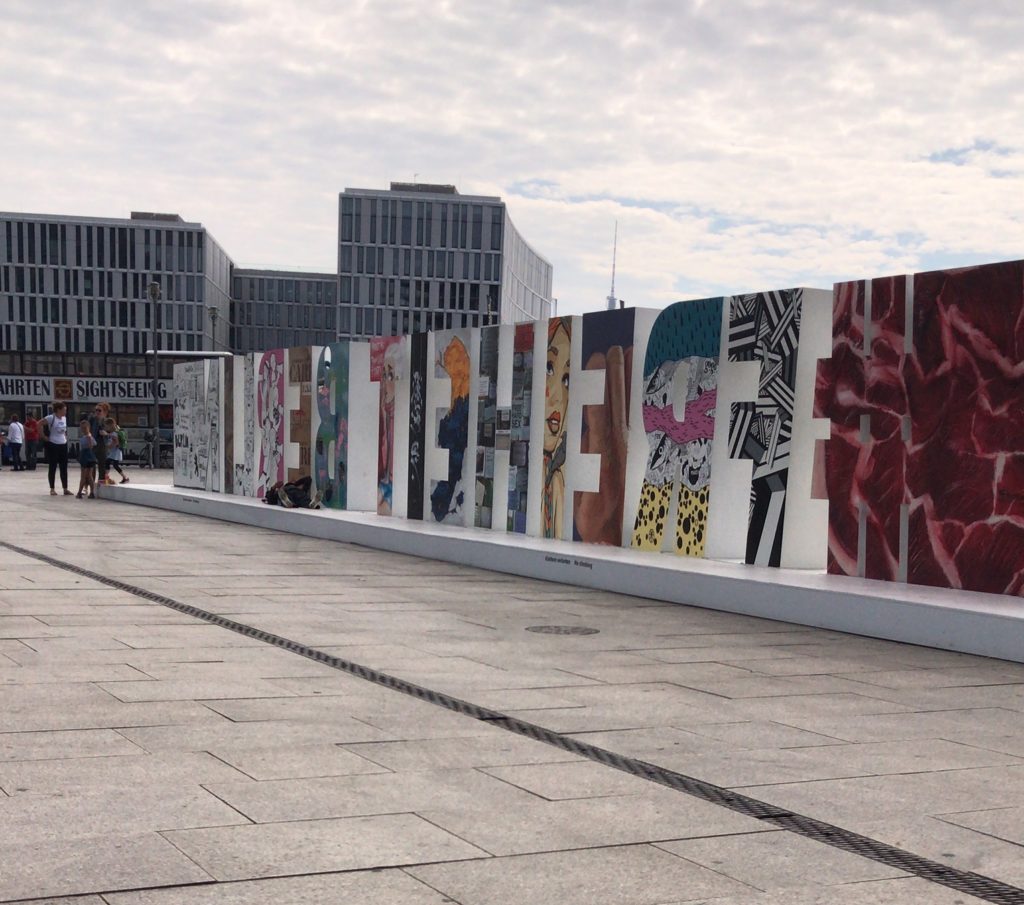
First rule of Grenzsteintrophy?
The Grenzsteintrophy is a rather secret affair, you won’t find a GPX file for it online and the files come with instructions not to share them. I had to get Hendrik and Andreas to assist with translating the instructions for the start. After the prologue in Berlin I had to travel down to Hof, to find Kleintierzuchtverein “I don’t think you have these in the UK, it’s like a social club for the breeding of small animals,” said Hendrik. “Mostly pigeons,” added Andreas.
I ought to confess that my timekeeping is shockingly bad. Proven again by missing my flight to Berlin by two minutes. I ended up flying into Frankfurt, the flight was delayed, too late for the trains to Berlin, off to the strangest campsite I think I’ve ever stayed on before finally getting a series of trains to finally get to Berlin for June 15th. It’s all part of the adventure, yes? I had meant to take a little time to look at Berlin as I’ve never been before and it’s a fascinating city.
Prologue
The prologue began at the Brandenburg Gate, now mobbed by tourists with large screens playing the football world cup just behind it. Two women, Regine and Wiebke, and a banner appear, but only one chap on a bike, Oliver. Before we know it we’re doing a podcast for Regine’s Radsalon. A frenzy of pictures, some serious swearing at the GPS as the loaded route isn’t showing on either mine or Oliver’s Garmin. I’m starting to get a bit worried about my total lack of German… even though everyone was very friendly, I’d just gone a bit shy again.
A courier guy called Thomas arrived and he knew the route, as Oliver tried to resend the files to his Garmin via his phone, mine is far too old for phone links. Thomas pointed at the ground, a two-cobble-wide strip marks the exact line of the Berlin Wall. As we danced in and out of streets and around the cars, he told us tales of the places we were seeing. Past the East Side Gallery, one of the last remaining sections of the wall still standing with its huge graffiti murals.
It’s a strange sensation chasing along on bikes following the two cobble line. It’s great fun, a city I’ve never seen, yet still I can’t quite get my head around the wall itself. It seems utterly crazy to wrap a section of the city in such a monstrous thing. It’s not just the 3.6m high concrete wall, there’s the patrol roads either side, the wire fence, razor wire, flares, dogs, land mines. All gone now, just the two cobble strip. I’m lucky, in my life I’ve never really been held back by anything – maybe the odd safety fence with something dangerous on the other side, but never something as strange as a political wall.

Some of the wall still stands. Here preserved as a museum. Note the chipped surfaces where people have taken chunks off it.
kopfsteinpflaster
I didn’t know the wall went out into the countryside; I thought it was just wrapping the city but no, it winds its way around quite an area. We rode out from Berlin towards Potsdam where Oliver had been born. It was great to have him there as I learnt more. I’d heard about the streets split in two, but never seen pictures, one side the silky smooth Western tarmac, the other kopfsteinpflaster [cobblestones]. Legend has it that they tried to drive VWs on the kopfsteinpflaster, but they fell apart. Only the Trabant was capable of surviving them. Even with the Lauf forks taking out the chatter I could see why.
Thankfully Oliver was kindly sorting the ferry tickets as we made our way across the Havel. The route of the wall becomes quite rural from here, every now and again we would pass orange signs, black and white pictures, mostly of men. They mark every point where someone was killed trying to cross into the West. It’s humbling. I’d noticed the trees too, great swathes of silver birches, full grown, some now dying back. My Dad taught me that silver birches are a sacrifice crop that you plant around oak trees to make the oaks grow straight. They also self-seed, often being the first tree to grow in empty space. These ones were beginning to die back – 29 years is a good life for a silver birch.
Riding around the route of the Berlin Wall gives you a great sense of the enormity of it, yet in the back of my mind I knew it would be nothing in comparison to the former Inner German border.
Blasting around we were soon back at the Brandenburg Gate. Too fast almost to process the things that I had seen. Bidding Oliver farewell I made my way back into Kreuzberg to the Airbnb. I stopped to see the Denkmal für die Ermordeten Juden Europas (Memorial to the Murdered Jews of Europe). A deeply moving artwork. I stood for a while. Watched the light.
17th June, the People’s Uprising
After taking a lovely clean German train down to Hof the next day, it was time to find that “social club for the breeding of small animals” and my fellow riders for the GST. The Grenzsteintrophy always starts on June 17th to mark the date of the Volksaufstand in der DDR [People’s Uprising in East Germany] where 40,000 protestors had gathered in East Berlin and were violently suppressed by Soviet Forces.
There was a giddy excitement in the air as people gathered, bikes were photographed, glanced across like racehorses, lots of fat bikes, some with enough kit for a world tour, others looking much lighter. Gunnar leaping around with delight, before jumping on a folding bike with tiny wheels and shouting “Follow me!”
Barrelling down past the first of the DDR watch towers, onto the very first taste of the panzer plates. We gathered at the point where East and West Germany meet the Czech Republic. Almost as understated as the event itself, this former heavily fortified point now consists of a small wooden post with a sign ‘STAATSGRENZE’. Gunnar was kindly shouting out all the instructions in both German and English, with a fluency I think I’ll always be envious of and a kindness I was to constantly experience. I guess I ought to add, I was the only woman and the only non-German. Gunnar shouted “Enjoy the tank tracks!” with a chuckle and we were off.
Thud-thud-thud!
I know I was a bag of nerves. It wasn’t a race, I knew that, yet it went off with a speed, straight onto the panzer plates. When you first see them you wonder how hard they can be to ride, will a 2.8in tyre take the sting out and turn them to track. I wanted to concentrate, to learn how they rode and felt. It was all quite fast, too fast to tune into them. Within a couple of kilometres they were already hidden in the thick grass growing over from the sides. You just had to trust where you thought they were.
Thud-thud-thud-thud… a noise that would become so familiar in the next few days. A man pulled alongside me, introduced himself as Stefan and asked if I would like to chat. Ironically he was keen to practise his English with an English person, whereas I was hoping for a very speedy course in German. Stefan was funny, he explained that everyone brought up in the East had learnt Russian as a second language at school and everyone in the West learnt English, so if I was stuck I should always turn left.
Then 5km in, my wheel slipped off the side of the panzer plate; I must have tried to turn back on, too late, I’d flipped myself over the front of the bike, landing heavily on my left shoulder and twisting my right thumb backwards and getting a slight thump to the head. Back up and on the bike, in the adrenaline rush I didn’t let the searing pain in my hand fully arrive in my mind. I tried to continue to chat with Stefan, who then also pinged off the side of a panzer plate and crashed. Dusting himself off and up again, more cautiously this time.
Despite trying to suppress the pain in my hand, it wasn’t working. I stopped, just to settle myself. Messaged Ali, my physio in the UK:
“How would I know if I’d broken my scaphoid?”
“Severe pain in the base of your thumb…”
“Oh…”
“Well, it might not show up on an X-ray for a couple of days. Can you get anywhere to have it checked?”
“Erm, I’m in the middle of nowhere, like really the middle of nowhere!”
“Well, you might be lucky. You might just have a nasty strain; see if you can ride and if not you’ll have to stop.”
“hmmmm…”
Somewhere in my memory I’d heard that the pain receptors are triggered by the visual so I decided not to take my glove off and look. I could hold the bars, gripped with my fingers, I could brake. I couldn’t change gear – I had to lift the other hand over and use that. My shoulder was really hurting and that, mixed with the required concentration to stay on the tracks, made progress slower than I’d wanted.
Got to keep on rolling
Many things went through my mind, mostly annoyance – crashing 5km into the main 1,250km of the GST wasn’t in the plan. To do these things takes months of preparation; for a sponsored rider like myself you owe a certain amount to your supporters to at least try to continue. Even with support it’s still an expensive game to be involved with. Mind over matter, as long as I wasn’t doing permanent damage then I figured I’d try.
The landscape in the early sections of the former border is rolling farmland. Nothing overly distinctive – crops grow, the sun shines, insects buzzing about. I couldn’t imagine what it must have been like with a huge fortified concrete wall. Nature heals the land, brambles grow where the sand traps once were. Just the concrete panzer plates remain.
Most of the towns and villages along the former border were destroyed or abandoned under the DDR. A few remain. Some of which were sliced in two by the wall, Mödlareuth or ‘Little Berlin’ being one of them and still today the two halves of the town have different postcodes. Approaching the town there were Polizei everywhere, a stage was up, a band playing soft rock covers, the banner as I could just read from behind said something about anti-Nazis. People all over the place; flyers being handed out. I couldn’t fathom what was going on.
As I rode round the corner the first of the Grenze museums came into sight. A strange mix of seeing the harsh reality of concrete watchtowers, fences, dog pens and searchlights, all mixed in with the rally and the music. There’s a restored section of the wall. It really hit home as to what a terrifying monster this thing was. Trying to imagine what it must have been like to live with the whole thing in place, the fear.
It’s a little bit dry
With the crowds and the Polizei, I didn’t fancy hunting about for food or water. Onwards down the panzer plates and into the woods. One of my main concerns prior to the event was water, I had three 750ml bottles. At home I’m more than happy to drink from high up, fast-flowing streams. I was carrying water sterilisation tabs, but I’d also been reading about the DDR making money from taking everyone else’s nasty waste and burying it – I wasn’t sure the tabs would cut it then.
What I hadn’t considered was the lack of streams full stop. It was hot, really hot, progress was slow, part feeling rather overcautious after crashing, part being in rather more pain than I was really wanting to admit. Tanks are rather extraordinary things – they don’t need to worry about the natural topography of the land, the concrete plates marching forward over repeated undulations through what was now really thick woodland. I knew I had to learn to just let it go, the fear of coming off the sides, the plates themselves are around 8in deep, sometimes buried, the sides concealed, sometimes the centre was a deep rut, sometimes full of small trees or brambles. The sides were often a mix of bushes with thorns, if you braved the speed they ripped your skin to shreds. You needed the speed to fling you up the other side, that and a rapid downshift of gears – all fine, unless you can’t use your thumb to shift.
The insect buzz felt so loud – the forest is a noisy place when it’s the only sound. No breeze. The ups were unridable, the best I could do was hop off as fast as I could and grip the bars and push upwards. I’m not sure Jeff Jones considered the multiple positions to be so handy when you needed to shove the bike upwards without using your thumb. Many people joke about my twig arms and that’s when they’ve not been crashed and then made to work. Without the speed the insects were landing and biting, horse-flies – evil, evil horse-flies. The humidity in the trees making skin turn to liquid sweat. Trying to push up hill while swatting horse-flies.
A mirage in the ‘desert’
I was running out of water, even stopping to check the map, I knew it could take some time. No streams in the thickness of trees, no towns or villages for a long, long way. Just as I was getting desperate for water a funny looking fountain appeared in the woods, Google translate didn’t help much with the writing on it. It didn’t smell funny so I drank loads of it and filled all my bottles.
I knew the event would be truly ‘solo’. I had a small worry about being alone – when you’re alone on most of the bikepacking events you know you’re likely to see people every now and again, but I knew it would be different this time. The route is too long and too difficult, easy to get dispersed along it. There’s no tracking, no dots to watch. Instead it relies on real connections.
Barrelling along the tracks, I see a small sign with a GST logo on it, confused but continuing I follow it round. Remember there’s no route marking for this event. I swing round the corner to find a large motorhome, BBQ covered in sausages, one bikepacker and two excited GST followers.
An embarrassed stumble around my lack of German and it turns out Daniel rode the GST the years before and he and his wife were following the route, stopping at certain points and waiting for the riders to pass. He had cleared it with Gunnar and because it was there for all of us it didn’t contravene the Kodex. The bikepacker was Sebastian, and one of the few riders who I’d managed to say hello to online prior to the event. It felt like a crazy mirage.
Sebastian was a bit braver than me, flying down the rollercoaster of tracks. Even then the odd one would cause us to stop and just admire the absurdity of it. We rode a while, got bitten by horse flies., Sebastien was a bit quicker and soon was gone.
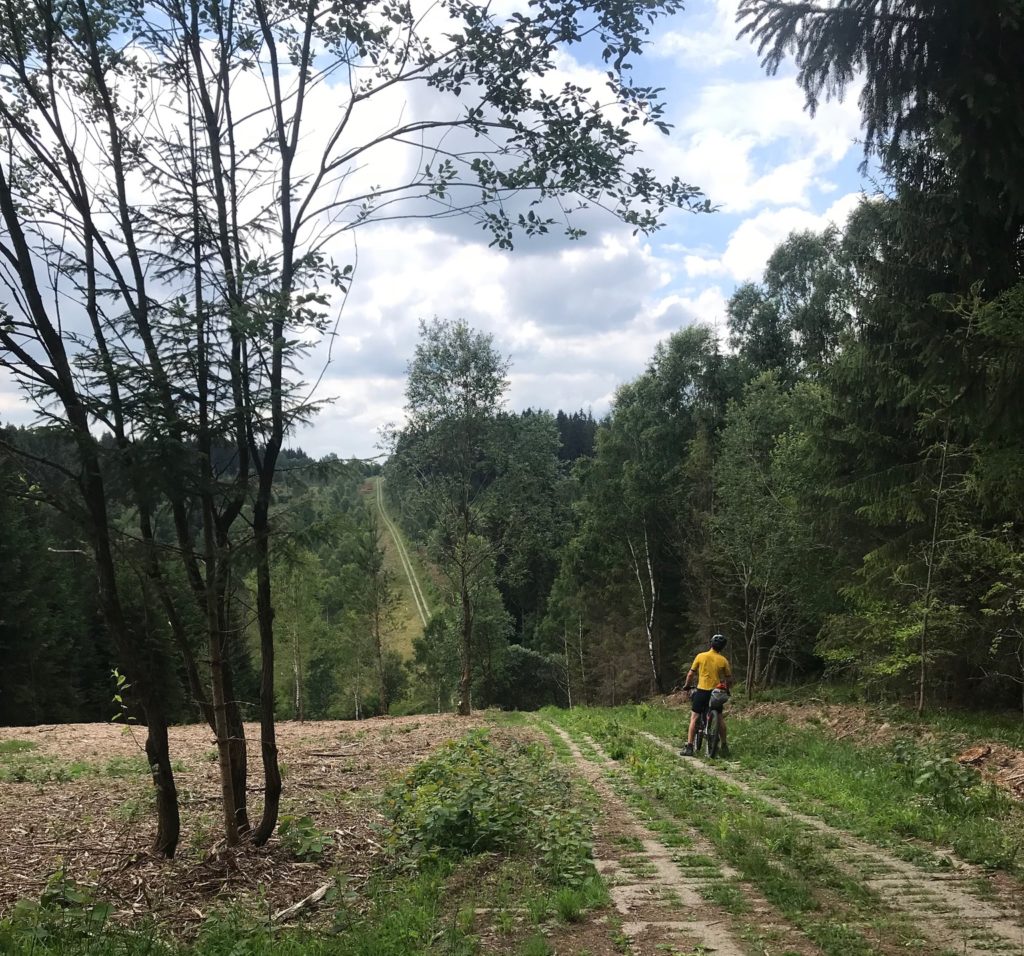
The hilarity and absurdity of the panzerweg rollercoaster ride. Hard to capture how steep these ripples are.
Of time and obstacles
Even though feeling rather beaten up from earlier – bramble scratches and horse flies adding to that – I was feeling a bit braver about letting the bike go, until I saw a couple of yellow plastic lids waving on sticks. Electric fences, straight across the track. It’s only day one and I’m wondering what else will be thrown at me. I managed to drag the bike through with only one zap.
In my head I’d budgeted seven to ten days to complete the GST. Meaning 130km a day as a minimum. I knew the early stages contained all the climbing, but still wanted to hit the minimum with the hope of extra on the latter days. There was going to be a lot of walking involved. And the nature of the tracks meant riding at night would be silly. As I headed into deep thick woodland the sense of being alone in nowhere was strong. The tracks were becoming more and more overgrown. Hard enough to walk down, let alone ride. Hunger for something meal-based and not the snacks I was carrying was growing.
Finally a town, a fair size town! Beautiful, but no signs of life – no shops, bars, cafes or even a garage. Hmmm… I could see the route heading uphill, if there was nothing at the top then it was back into the woods again. A tarmac climb – yes, it was steep but should have been easier with 32/40 as my lowest gear. A brain battle of ‘you’re not allowed to walk up tarmac’ as it wound its way up. And then, like a mirage, there’s bikepackers, bikes and an open bar!
Fantasie
There was Sebastien again, full of chilli now. The other guy introduced himself as Marcus. I was glad to see them, more glad that there was food. My lack of German was showing rather badly. “Essen?” was all I could manage. I drive myself nuts by being so bad at languages. “Fanta?” I’d had a real hankering for it for some hours. What I’d not known prior to this was that Fanta originated in Germany. During WW2 there was a trade embargo on coke syrup being brought into Germany. The head of Coke Germany came up with ‘Fantasie’, which was made from ingredients available at the time. After the war Coca-Cola brought the new drink back under the wing of the main company, but Fanta lives on.
I braved taking off my glove. My wrist was already turning an alarming shade of black and purple. The backs of my arms were swelling up with horse-fly bites. It was hard to tell which swelling was which. Marcus taught me a new word: bremse. It’s German for both horse-flies and brakes!
Off into the fading light after a good fill of food, a vague attempt at washing in the pub toilet and bottles filled. I chose to stop a little earlier than Marcus and Sebastien. I wanted to stay higher up, in an attempt to stay clear of the insects. Staying on my own in the wild has never really bothered me, I get more worried about built-up areas. I had a little flicker of worrying about not being able to reason with East German escapee ghosts, but decided that was just silly. It was more entertaining trying to get into my tiny tent with a dodgy hand on one side and a dodgy shoulder on the other. Heavy-duty pain killers deployed and sleep soon found me.

Many of the former watch towers have been torn down, but a few have been restored. This one marks a motorway crossing.
Flies of the Apocalypse
Back on track next morning and I pass the spot where Marcus and Sebastien are just rising. A terribly civilised spot with coffee brewing on a picnic bench. The sun was shining and the early nerves of day one had passed. I left them to their breakfast and rode on. It’s a beautiful landscape, yet the scar of the wall is still visible, etched into the ground. Crops were growing, cornfields with the blue glow of flowers shining through. The trail magic continued with wild alpine strawberries growing up through the panzer plates. The bremsen were still swarming and landing every time you entered the woods; swatting them off was like some frenzied dance and they were biting straight through my clothes. If you swatted them off bare skin the blood would trickle from their saw-like bites.
The trail wound its way down and was crossing a low plain. Thick bullrushes grow through the holes, almost hiding the concrete plates. You couldn’t ride, more use the bike as a battering ram to get through the undergrowth. Thankfully I’d been reminded of giant hogweed just before I left, childhood fears of it returned as I rounded a corner to see loads of it.
Nature trying to kill me was almost becoming amusing now as I donned a rain jacket and tip-toed cautiously past. From time to time the wall would pop out at major roads, each one marked with big brown signs showing the date and time each checkpoint had opened. It confused me at first, or showed another gap in my knowledge of history. As the inland border had fallen in November 1989, each checkpoint had opened at different times depending on when the information had reached those in control of it.
Grenze
The inland border or Grenze was made up from many ancient regional borders within Germany. Each was marked out with various different border marking stones, many now hidden under deep thick undergrowth and fallen trees. Over the years Gunnar’s team of scouts have found them all to link together to form the Grenzsteintrophy. Some places felt more akin to a scene from Pan’s Labyrinth with elaborately carved stonework and lettering nestled under thick moss. Google translate wasn’t doing much for the inscription above the fountain at Rödental. I was thirsty, drank it anyway.
As the Kolonnenweg (Kolonnen means convoy) tracks march their way forward over the landscape they change, sometimes they’re five rectangular holes wide, the widest point is the side so you risk coming off the sides. The best place to ride seemed to be in the second channel from the centre, avoiding as much undergrowth as possible but giving you a slight warning before you flipped over the edges again. It was like trying to ride along a kerbstone, the concentration almost more tiring than the riding.
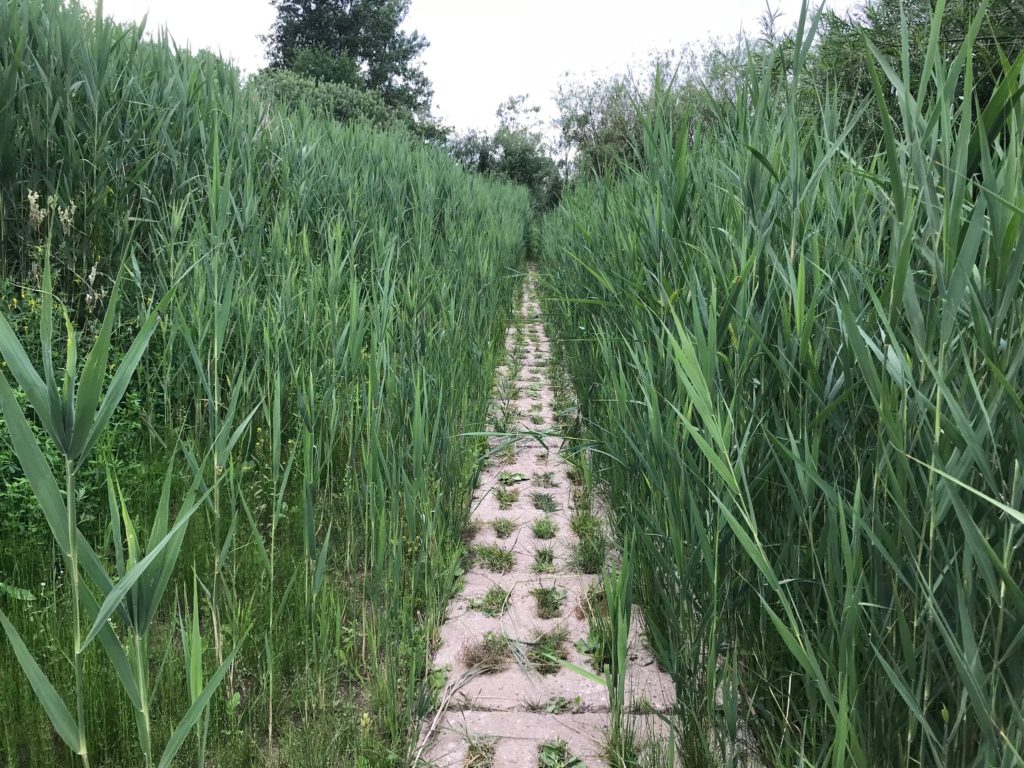
Finding the tracks and staying on them when vegetation had grown through was fun. At least this stuff doesn’t have thorns.
Sometime you got lucky and the holes were horizontal, while there was some chatter to travelling over them you didn’t feel like you were being shaken to bits. If you were really lucky they were almost solid concrete with three holes in, two at one end, one at the other – the fat tyres, Lauf forks and the Ti of the frame sucked up that nicely.
My plan was to do one night in the tent, one night in a cheap roadside pension. While I’d only managed 110km that day, my hand was killing me. I opted for stopping early and pulled into something which looked decidedly closed, but had allowed me to book online. I felt a bit feeble stopping early. However my mood lifted immensely as two bikepackers swung in just behind me; it surprised me as I thought I must have been way off the back.
Björn and Daniel were carrying more kit than me – I discovered quite quickly that one thing I’d missed was extra clothes for eating meals in the evening, so apologies to you both for my slightly transparent base layer and towel combination over dinner. It was a lovely evening, and nice to discover that I’d already chatted to Daniel online prior to the event.
Nothing but cigarettes and fountains… and horse-flies
Taking an early start next morning after filling my pouches up with the breakfast that the host had kindly put out, I made my way from Streufdorf and back to the route where I’d left it. Many of the villages on the southern sections of the inland border are UNESCO World Heritage sites.
Ummerstadt was stunning with a whole town of timber-framed houses, many with elaborate paintings along their timbers, square cobbled plazas in the centre and those precious fountains flowing with fresh water. Not much by way of shops, usually just a cigarette machine and a fountain. Ummerstadt thankfully had a bakery. I wonder if the first bakers of the pretzel knew what good ride food it made with its chewy salty loveliness?
Back into the undergrowth, often dragging the bike along while being bitten repeatedly by horse-flies. You craved a bit where you could ride faster than them. I was paranoid about any of the bites getting infected and tried as best I could not to scratch them. Sometimes there was the light relief of neck-deep stinging nettles… while the stings were unpleasant they made a change from the bites with a tingle. Deep undergrowth often also means ticks. Stopping to check I found half a dozen on my legs. A mild panic as I couldn’t find the tick pullers at first, but I put them back in a handy place as it became apparent that it was best to check every couple of hours to remove them.
Now it may sound like nature was doing its best to stop me, but it was also revealing some of the most beautiful scenes. Never before have I seen such amazing wild flower meadows, the volume of colours twinkling in the green with a chorus of butterflies dancing above it all, I’ve never seen so many types of butterfly. It showed the importance of protecting their strip of green. The beauty punctuated by the occasional concrete watchtower looming from a hilltop or strip of the fortifications left for us to remember and not repeat.
Death Strip
The huge watching platform at Zimmerau is still standing, only 1€ to go up, erected in 1965 for people to view the DDR and the death strip. While it’s an extraordinary structure, it’s rather brutal and sinister yet the land you look out on is beautiful rolling farmland and woods. The wooden platforms inside are more like a pier at the seaside.
Back to the ramps of Kolonnenweg, the bremsen and the zecke (ticks). I was getting aware that the supplies I’d started with were wearing rather thin and I’d seen nothing the way of food for quite some time. The emptiness of the border area was starting to sink in more and more. I’d not seen anyone all day, nor any shops. Just a few desolate stark Grenze museums, bits of fortifications. I’d popped out from the undergrowth at the former Russian barracks at Henneberg.
There’s a huge sculpture to mark reunification, brightly coloured, almost childlike, a happy depiction of the joining together of Europe, “DAS VOLK of New Europe” framing the old watchtowers as the EU stars wave from a bright blue flag. It made me quite sad thinking of Brexit in the UK, does nobody remember the damage that huge walls and borders do?
I detoured off the route on the hunt for food in the next village. It looked big on the map, but revealed nothing more than a fountain and a cigarette machine. This was beginning to become a pattern. Hungry isn’t the best way to deal with scrabbling over fallen trees, bashing your way through impenetrable scrub. I was, I admit, getting a little panicked at the lack of food.
Finally an hour or so later I swung into a village, expecting nothing more than a cigarette machine, but what do I see, bikepackers!
Bikepackers Banquet
It was Stefan again, with Michael and Markus. I honestly thought they were a mirage, I was so excited. The table was over flowing with food and “this beer is special for cyclists”. Stefan kindly ordered me a pile of the nicest food you could imagine – freshly made pasta, beef stew, salad and more.
It turned out that the pub was usually shut, but the landlady had family visiting with her and having opened the kitchens had spare for us. I think Stefan must be something of a charmer as he also talked her into letting us all camp in the pub garden, and give us a huge breakfast next day.
Food eaten, tents up, washed and back to the table, this time without a hotel towel so I’d had to fashion a skirt from my waterproof base layer twinned with a windproof for modesty. Stefan exclaimed: “Gosh you are travelling light, where’s your evening wear?”
It was lovely to share food and drinks with them all and find out more about the things which I’d passed. Stefan explained the protest at Mödlareuth. It was an anti-Nazi rally. The interesting bit was that there was a far right politician Björn Höcke campaigning for the wall to go back up! Hence all the Polizei in attendance. Stefan said further up the route I would come across a beautiful castle at Hanstein, the politician owned a house just below it. Protestors had built a replica of The memorial to the Murdered Jews of Europe outside and refused to take it down. Talk turned to borders. Markus had grown up under the DDR, whereas Stefan and Michael were from the West. All agreed borders were a silly idea. None of us could understand why the UK had chosen to leave the EU. This happens every time I go to Europe. I wonder if those who voted out ever travel and gain perspective?
Point Alpha
We all set off again after breakfast. Riding together was fun and they were good company. It made the vertical scrabble up a huge loose muddy bank at Hilders almost funny, the sheer absurdity of it. I’m not sure I would have believed it was the path without having them with me there. Sweating like crazy in the humidity, skin like liquid again, but ripped and bleeding from the brambles, we finally broke clear, one small stone border marker protruding from the thicket. “Ah, Gunnar!” chuckled Stefan.
I left them to ride on, a little faster than my hand would allow. Even with a big breakfast I knew I needed to stock up. Every time the track became unridable the bremsen would descend. My skin was swollen from all the bites. A burning itching I daren’t scratch for fear of infection.
The heat was growing. I’d passed Sebastien on the edge of the woods; he was having a rough patch. Unable to eat properly in the heat. He came past me again. By this point I’d given up on finding food in the villages, a fountain was a bonus. He passed me just as I’d removed my shoes and was standing in one while drinking from the flowing spout.
I knew I was getting closer to Point Alpha, the most western point of the former East and an American controlled border point. With the Russian border point being harsh and sparse with nothing remaining, I half expected the American one to have some kind of junk food sales. Instead, and I’ve not managed to find out why, there are some huge iron religious sculptures along the Kolonnenweg leading to Point Alpha.
A glitzy fibreglass dog
Point Alpha wasn’t without a certain degree of its Americanisms. The preserved parts of the fortifications probably being the most glitzy. They even had a fibreglass dog. The less glitzy watchtowers were of more interest and going further than the distance travelled by the average tourist reveals the more sinister tumbledowns.
Stefan had told me that I would find a salt mine further up. “You’ll see a white mountain: it’s salt,” he told me. It was getting late and I wanted to find somewhere to hide my little tent. Then I turned and the giant salt monster became visible between the trees. I never knew there was inland salt, I thought it all came from the sea. Still the concrete tracks, the watchtowers looking over it all. It’s hard to describe the size of the salt mountain maybe starting at 610m, I’m sure this monster can’t have been that far short.
I hid my little tent just on the edge of Vacha and finally found a German budget supermarket, I had wondered if they’d exported them all to the UK… (I hope Germany doesn’t take back all its budget supermarkets after Brexit, then we really will be shafted!) I’d bought the wrong water – ‘natural’ means it has bubbles in, just so you know. A princess wash in sparkling water, a beer opened with a pedal and I was treated to laying in my tent watching fireflies dancing before me. I checked they didn’t bite before admiring them.
The night wasn’t fun. I kept waking, itching with burning bites and scratching like crazy. The following morning I woke feeling rough. I’d left the previous day’s laundry out to dry having quickly established that you can’t dry kit on the back of your bags if you’re dragging a bike through undergrowth. Mostly hung over my bike. Trust me, picking the slugs off your kit before wearing it is one of the least glamorous elements of bike packing.
A little perspective
The sunlight burning through the morning mist made up for it as I made and drank my morning coffee. I rode for a few hours, it was the solstice after all. Stopping at the next supermarket to attempt to pile the bike with as much food as I could carry before heading off. I’d thought my pile of pretzels nestled between the hoop of my Jones bars and the elastic of the Apidura bags would be safe. The undergrowth had other ideas. I think I managed to eat half of them.
I knew I was suffering; my hand was killing me. I could shift up with my fingers but to shift down was impossible unless I lifted my hand from the other side and helped it. A draining pain. It was still black and swollen. I’m right-handed and it’s my right hand. Opening packets, zips, clips, using lighters, etc., all hurt. The shoulder on my left was weak; it’s been weak for years since I tore a rotator cuff and never rehabbed it. The thump of the crash still present. These things added together with what is already one of the toughest routes in bike packing could have broken me.
However, let’s put this in perspective for a moment: I’m young (ok, maybe, I’m 40), I have a fancy-pants bike built specifically to do this, I have a satellite tracker, a GPS and back-up GPS, and iPhone, chargers for three days, really nice kit, tent, bag, mat, tiny stove and pretentious filter coffee. There’s money in my pocket and I’m carrying a card and a British passport. I put myself here for basically, fun.
Now let’s imagine for a second, the wall is still up, I’ve hit a point where I think I might try to flee the DDR. I have nothing, maybe a small bag with some precious possessions? Maybe nothing? We’re back in a time of no internet, no mobiles. Just fear. The 5km death strip. Fences, vehicle traps, sand traps, dogs, walls, landmines. You could try, but you’ve been taught to watch your neighbours and they’ve been taught to watch you. A fascinating fact: the DDR compiled more written history of its citizens in 40 years than the whole of German history! There aren’t maps; the DDR side was a no-go area. For those brave enough to try, they would have experienced something far worse than me.
Sounds like horrible history, yes? Let’s just remember for a moment those who are fleeing their homeland for political reasons. All your stuff in a plastic bag, you don’t really know what lies ahead for you, you’ve heard there’s a chance, you go ahead to see, leaving loved ones behind.
Back on the Kolonnenweg
For my story, I’m about to descend one of the best bits of singletrack on the whole route, no bugs, just a steep but fun smooth downhill, whipping through the trees with a grin-inducing smile. But before you know it I’m back on the Kolonnenweg, elated at the three-pin plug formation of the panzer plate until I remind myself of why it’s really there. Abandoned watchtowers come and go. Most of them were destroyed after the wall came down. Just the tracks remain, endlessly marching forward, in and out of forest, up and down the hills. In some places the border winds deep into forest and I scramble over fallen trees, dragging the bike under and over them.
It’s funny – when I started putting the bike together I wanted the Jones cut loop bars; however, only the full loop are made now. I was told the bit in the middle is really handy for attaching things to. Personally I found it really handy for dragging the bike over trees and undergrowth!
The days were staying hot, the heat was cooking me, my skin was driving me crazy from the bites with more bites and stings happening every time the Kolonnenweg turned back into the woods. Checking the map from time I’d search for the next potential place for food and water. Most of the time finding nothing but a cigarette machine, I was beginning to think I’d have to take up smoking in order to put something back into the local economy.
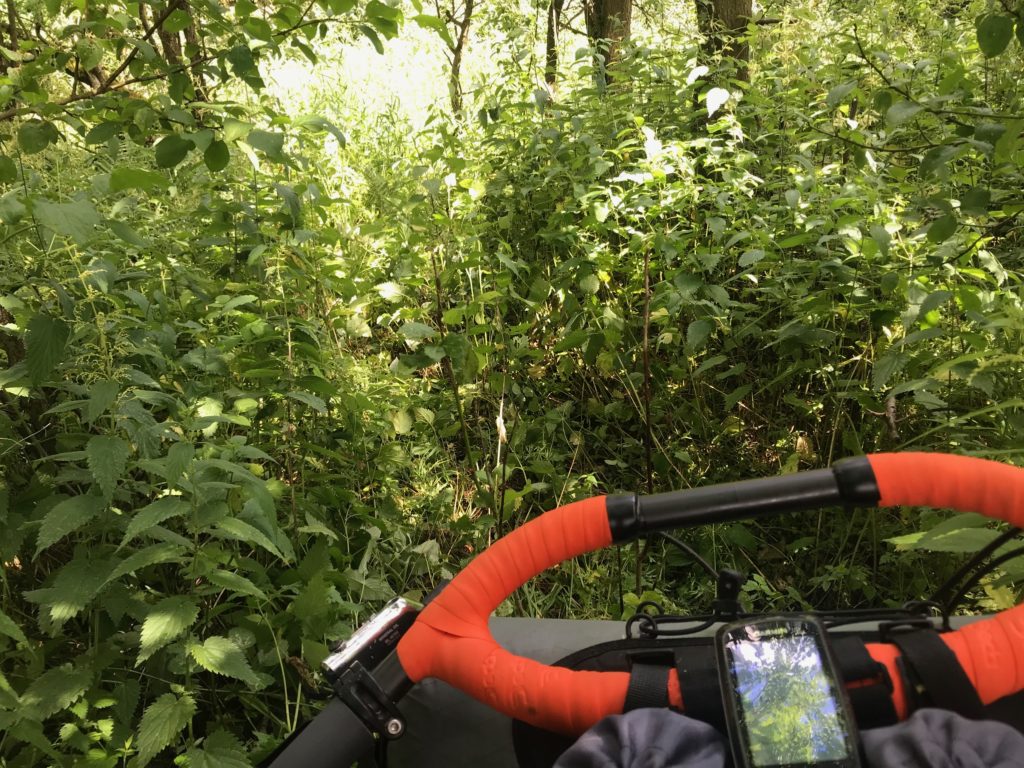
Amazingly, neck deep stinging nettles made for a bit of light relief from the brambles, bremsen, zecke and mosquitoes.
The endless trail
The woods thickened and the track marched on up and down. It felt dark and I knew I wasn’t going to hit the required 130km by night. I really needed to do some laundry, especially after the slugs. Bashing the bike through the scrub was knackering, it was slow, I knew there was little ahead for a while. It gets a bit demoralising, but you can’t stop. I managed to book a cheap hotel that I was hoping to reach a few hours later. I don’t really remember the woods, just it feeling relentless, feeling battered, I was in need of a bike shop and some fresh brake pads. The town turned out to have a kebab and pizza joint that even sold beer. I sat outside on the floor, inhaled the pizza.
I must have looked and smelt awful, the joy of internet bookings meaning they can’t tell you there’s no room. They just shuffled me off into the peasants quarters. I didn’t really care, all I wanted was to rest. Waking every night with the insane itching of so many horse-fly bites and burning skin wasn’t quite bringing the required rest.
Thankfully, the neighbouring town of Eschwege had a fantastic bike shop – Velo Mangold. And thanks to Marcus I could now ask for “Bremsen bitte” and with some more stumbling about with a handful of words I found out that the shop knew all about the GST and Gunnar. And they kindly gave me a warm drink in the morning drizzle as I fitted the brake pads, although the stop did mean a bonus climb back up into the beginnings of the mountains to rejoin the route where I’d left it.
The grey damp mist hanging in the woodland, scrambling over fallen trees, the pattern of moving forwards even with repeated obstacles becoming more rhythmic. As the skies cleared and the blue sky burnt off the grey, the tracks turned to feel more like ancient sunken lanes rolling up and down. At the top of one track a gap in the trees revealed a ‘beautiful castle’, just as Stefan had said. Bornhagen Castle sits like a picture postcard, high up on the hill. It confused me as to why that right-wing politician would ever want to carve this landscape back into two.
Panzer Surfing
The panzer plates surfed up and down the landscape like a rollercoaster. Even with my hand hurting I became braver. I could hear Gunnar in my mind saying ‘you just have to let it go’. I kind of had to, if not I really was going to be here all month and might never get to Priwall.
There’s a thrill in flying down the plates at speed even as the brambles rip at your skin, trying to stay on the second line in between two sets of holes, praying you didn’t ping off the sides or find a missing or broken one, just to carry as much speed as you could up the other side. I still couldn’t use my thumb to change down, instead attempting to leap off before crashing and hope my feet would grip on the ridiculous angles that the tracks went up. The bike would have quite happily slipped straight back down the bank so you just shoved it upwards, arms outstretched, one on the grip, the other like a half usable hook on the loop.
It’s exhausting, you burn far more calories than you can eat, or even find to eat. Hohengandern revealed the delights of BiFi – apparently it’s food. Sort of sausage-based, sometimes wrapped in everlasting bread and chilli, all sealed up in bright orange plastic. You can fit quite a lot of those in the fuel pods on the bars. Another round of removing the ticks and examining the bites. My skin was quite horrible looking, swollen, scratched, sticky. Then back onto the thicket.
Passing Teistungen border control point with its huge steel re-enforced ram-like gates, helicopters, and watchtowers as the evening is creeping in is quite daunting. Maybe I’d realised that I’d not really spoken to anyone in a couple of days. I know nobody was there, but I didn’t fancy staying there. Maybe it’s me, somehow you get a feel for the spaces, you’ll know when you find the right bivvy spot.
Another itchy, scratchy sleep. I was so glad I’d not listened to the people who told me I was soft for taking my pellet stove to make coffee. It was one thing that was keeping me sane – that and the pretzels.
Low point on the high point
I knew I needed to get over the Brocken today; it had been looming in my mind since the start, like a mental block. Andreas had told me about it when we’d been playing with my big map. It was the former Russian listening station, now a ski resort that even has a little narrow gauge railway to the top. It’s also the highest point of the Harz mountains and from here on, Germany turns to flat open plains.
The weather had been coming in for a while; it had been raining steadily. The foothills held a few mountain huts, spectacular views over tree-covered landscapes, still the pattern of riding, scrambling over fallen trees, brambles, breaking clear, taking the ticks off in a clearing, punctuated with occasional stone markers. I knew I was feeling rough. Rougher than I had done all trip and still the Kolonnenweg marched on. I didn’t have much in the way of food with me. I’d filled up at each opportunity, there just hadn’t been much in the way of opportunity.
I knew I was pedalling slowly, every pedal stroke an effort. There had been logging vehicles in, deep muddy ruts on the forest floor. Onwards and upwards, past the out-of-season ski lifts and closed restaurants. It was getting late and I knew there wasn’t much on the other side either. The weather had locked into rain and mist; the higher I went, the more the temperature dropped. It was steep – not so steep that I couldn’t pedal, yet the effort felt huge. The route took me deeper into the woods, most of it unridable.
I was hungry, tired, broken. The little food that I had consisted of a bag of honey mustard-coated pretzel chips and a BiFi. I stood still in the woods and ate the lot. It worked for a while. I hate riding with no spare food. Someone told me when you think you’re broken you’ve really still got at least half a day left in you. Shoving the bike ever upwards, I felt like a world of pain, crawling on like a savage animal. I’m sure even my breathing sounded injured. In my head I kept trying to run through any trick I could think of to bring myself round. ‘Ok, find a mountain hut, make coffee, it’s hot and you can have some caffeine.’ Nothing. Just empty space. White, white empty space. I saw tourist walkers. I must have looked a state.
Descent into ’73
Finally I found the train tracks at the top, and then out for the last 200m of ascent on a tarmac road for a couple of kilometres. Too delirious and cold to hang about at the top I knew I had to get down and into shelter as fast as I could manage. Ripping down the panzer plates, I couldn’t see fast enough in the thick fog – just had to trust. Coming down to a level which felt warmer. I stopped, checking the phone again, thankfully there was a signal now enabling a pension (motel/hotel) search. I could see Bad Harzberg, maybe 5km off the route. The momentary relief faded rapidly as the route suddenly went straight back into the scrub. I think I lost two hours over that 5km, which ended up 10km and a long road descent I knew I’d have to climb again next day. There was a cheap pension. I booked it.
The Overlook Hotel
The pension I stayed in is probably best described as David Lynch does Germany. It was brilliant, utterly surreal and fantastically trapped in 1973, much like the rest of Bad Harzburg. I’d arrived late yet still was greeted by a friendly stumble-round language and a slightly horrified expression of the state I must have looked and smelt. I pointed in the direction of the Brocken and I think we managed to make sense to one and other. I couldn’t tell if the bed was soft or if I was so broken that it felt like it swallowed me.
I woke like a zombie needing a caffeine jump-start. I knew I’d dug too deep to get over the Brocken and down to safety. Breakfast wasn’t going down too well. I stashed some bread and ham; it’s not usual for me to have no appetite. It was Sunday, nothing was open, just a garage, more BiFi, at least there’s a few flavours. Still cool and misty in the woods. The climb back up was slow, thankfully komoot showed me a more direct route back.
High plains drifter
It’s a long, long descent from the Brocken into the sandy plains of northern Germany. My fantasy was a nice easy-flowing trail down in sunlit forest – instead the trail became narrow and technical, still with fallen trees, I felt cold – colder than I should do. Stopping in some kind of fancy pavilion style hut at Jungborn and putting on all of my clothes, even leg warmers. Later I’ve since found out that it’s a former spa, dating back to 1896, Germany’s first and the biggest naturopath centre with accommodation for 250 guests. Later it became a retirement home for the DDR in 1960, not long before it was destroyed by them in 1964. It’s since been restored to mark 111 years since it was built.
The brief shelter and warmth made me feel better. I had a bit of a word with myself. Carried on. Sunshine breaking through the clouds. Long open plains opened up before me. Riding wasn’t speed, but it was steady. Panzer plates vanishing into the horizon far away. I turned back and looked up at the Brocken, pan-flat plains and then a massive ridge rising up.
Long straights, then sharp turns on tracking concrete marched round the fields. From time to time I passed farms, their harsh concrete structures making them look far more like repurposed army barracks. Always onwards the concrete plates –I keep repeating that but I can’t think how else to describe their enormity. Past leftover ’70s styled rectangular watchtowers.
Through thick, thick copse of silver birch. One of my biggest visual memories is the silver-white ghostlike trees, all reaching the end of their lives, a sacrifice once more in order for nature to reclaim. A small ridge, I had nothing in me and walked up, had another word with myself. Feeling an upset stomach begin to churn. I looked at the map. Hornburg was only a few kilometres ahead and it looked big enough to have something more than a cigarette machine. If I could just get a can of Coke, usually I have quite a robust constitution, I thought that would sort it.
Hunger
Two laps of Hornburg revealed no shops or garages. Google said the nearest was far from the route and the route wasn’t taking me anywhere close to anything for some time. I’d seen a cake shop (just opposite the wall-mounted cigarette machine of course), if you’ve not tried kuchen, the giant German cakes, it’s worth a trip for that alone. Very light and very large. Washed down with coffee and coke. Loaded with sugar I carried on. I felt better for a while, stomach not quite right, but better. The constant judder of the tracks isn’t great when you feel rough but I felt like I was tapping along.
Hunger was creeping back in. I looked at the map – I must have been muddled, I’d thought I’d seen a garage next to the road crossing at Hötensleben, instead I rounded the corner, a harsh hexagonal turret from one of the ’60s watchtowers and a section of the wall. I don’t really know what happened next, but I went from fine to totally not fine very rapidly. Really hungry and really weak.
Hötensleben had nothing, separated by a huge open mine from Schöningen, I crawled along barely able to ride the 2km, all I could see were derelict industrial buildings, nothing else, I was struggling to find the centre, the shops were shut, just a kebab shop open. Greasy burger and chips ordered with the help of a man standing by the counter. I knew I looked rough. The heat from behind the counter felt like a furnace. I couldn’t find a hotel or a pension.
Pitching my tiny tent, hopefully hidden behind some allotments. It was far too early to be trying to hide so close to a town. I just needed to stop. Rest. Sleep. I made myself eat, drink water. It was still hot, or was it? I couldn’t tell. I slept, I woke, soaked in sweat, kicked off the bag, slept, froze, sweated, slept, woke, slept. It went on for hours. Again I woke, throwing myself out of the tent just in time as the gurgling stomach decided it was time to evacuate.
I lay on the grass after, feeling vile and unable to move. Feeling too weak to do so, but I knew I had to. Trying to pack the bike bags isn’t easy when you’re weak. My little WhatsApp group of friends were getting worried for me. I couldn’t find anything in the town online and one of my group helped me find somewhere to stay. Before I could go anywhere near a hotel and fall over, I knew I’d need food. I was so scared my stomach would go again as I tried to make it round Aldi.
Checking in
I knew I stank, my skin was grey and ashen. No sign of life at the hotel. Just a sign and a number to ring. I’m not sure I could even manage English at this point. A stumbling of words. A car pulled in and a woman got out. She showed me in; I filled in my details. I could feel my legs getting wobbly. Bike unceremoniously dumped in a locked garage. I think I made the toilet with seconds to spare. Shower and sleep. Every hour or so I’d wake drowning in sweat. Honestly I’m amazed they didn’t have to burn the bedding after. I had to flip the duvet over I was sweating so much, but then freezing. I got up, showered again. Washed all my clothes. Hung all my kit out. Ate, or at least tried to. I still stank. Even if I showered I stank. A friend pointed out that I was probably in ketosis, Google offered no help, just ways to put yourself into ketosis for a diet! Why on earth would you want to inflict this on yourself?
I just lay there, in and out of sleep. Idly I’d put the TV on, the only channel in English was CNN. Trump on the news, busy splitting families up on the Mexican border. Kids taken from parents. Another round of the UK not knowing how or why it’s trying to leave the EU. All looping round, and here was I laid up in a hotel next to an open mine, split in two by a political wall. Again I was shown such kindness. I hope the same would happen for any sick traveller; something about the guy who owned the hotel told me that it probably would. He had been through the wall being up and coming down. Why does nobody outside of this learn?
Two nights in the hotel. I done a lot of thinking. Should I try get to somewhere with a train and get myself out of here? It didn’t feel right, in a weird way it was all part of this journey. Also, if I didn’t complete it then I’d have to come back and do it all again! Maybe in my delirium the phrase “And this too shall pass” had come into my mind – I’m not sure, I know it never left me from that point on. I’ve looked it up since I’ve been back – it’s a Sufi proverb, too long for this write up, but worth looking up the story.
After the second night and a full breakfast I packed the bike once more and returned to the route.
Checked out
I can’t exactly say that I was feeling sprightly, my stomach was still churning and tiredness was deep set. Looking at the Grenze museum at Hötensleben, the hexagonal watchtower and fencing, the spiked traps, sand traps, the street lights in the grass and a stark watchtower looking down from the next small hill. It’s still chilling, even in the sunshine.
My legs were soon back to the rhythm of riding over the panzer plates. The jigger, jigger, jigger isn’t the best thing on a sensitive stomach, but onwards the plates marched, soon leaving the town perimeter and returning to the emptiness of rural agricultural Germany.
I’d been told that if I thought the southern sections were sparse then it was due to get more sparse in the north. The tracks soon returned to bashing undergrowth, the bremsen biting and the brambles ripping. From time to time I would pass the odd block or two of flats, with the World Cup on it was a little confusing trying to decide if the flags flying were patriotic or sport or both.
Welcome to Marienborn
I didn’t really know what Marienborn was as I approached it, the route swung into a series of harsh concrete buildings. It gave me a feeling that I ought not be there at all, despite it looking totally out of use. It’s a huge checkpoint and the closest point that West Germany gets to West Berlin, making it one of the busiest checkpoints. Even out of action, the buildings still hold a certain power. They’re not even fancy, just blank looking ’70s and ’80s squat square structures. Floral net curtains instead of the iron curtain in some of the windows.
I rode into the vehicle checking area, its yellowing plastic roof casting a glow. I had to think for a moment and remember that the last time this place was in action there was no CCTV, instead everywhere was covered in mirrors, for looking under the vehicles. It’s huge, I can’t imagine it being anything other than a horrible experience, coming out of the other side and you’re into a huge service station. Coach tours pulling in to go see the checkpoint museum, their experience different to the way I’d come through the brambles to it. My excitement at seeing real junk food services and feeling like I was back into civilisation – it’s not that I like service stations, I’d just felt a bit feral for days.
It was a shock to have to pay to use the toilet – why do we do that? Access to toilets and drinking water should be a basic human right. I sat outside, with coffee, coke and chocolate milk, posted a couple of photos up of the checkpoint. Andreas told me of a time after the border was open and he and a friend were crossing at Marienborn. It was still manned by the ‘VoPos’ – Volkspolizei who were still searching cars. You weren’t allowed to take money over due to the difference in the exchange rate in the Western part. They were stopped by the Polizei. Andreas had hidden money inside the covers of cassette tapes; the VoPo had held them in his hand, but never looked inside. They’d had to follow the Polizei to a garage and turn out their pockets. Andreas’ friend hadn’t known where the money was hidden and they spent a fraught hour with his friend expecting to get dragged off to prison at any moment.
The forgotten
The route soon left the mainstream of the services, disappearing through a gap in a hedge and it was back to the non-tourist view. Rows of semi-derelict concrete flats, bits of housing. Scruffy, poor looking. As I rode on there was a feeling of nothingness, industrial mixed with agricultural nothingness. Once beautiful rail stations, hard to date but long since forgotten. Nothing boarded up, it’s like there’s not enough people about to merit defence against looters.
Huge fields opened out, the sun was back in full force and the parched land radiated heat. The crops I saw were wilting. To be fair, so was I. The promised sparse north was proving to be just that. The jiggled stomach was causing many rapid ‘hedge stops’. I knew I had to be careful with an already drained body. There was more of a mix of track, and kopfsteinpflaster did their best to shake me to bits. I wanted to push on more, but a broken body and a painful hand meant I could only plod on. Endless fields. The former border tracing around the edges of some and straight through the middle of others. The ground gets more sandy, another good reason for the fat tyres, still hard work pushing through.
I knew getting food would mean longer trips away from the route. I veered off for a dirty burger and fries, before hiding in plain sight just outside of the town watching the sun setting through a row of neat trees. Food wasn’t going down that well, but I managed it.
Back to nature
As morning came, so did a fast evacuation of the tent for another hedge stop. A deer ran from the woods – I swear it turned round and shouted at me. Hey deer, we’re all animals here. Packing everything down and riding the short trip back to the route, straight into bashing through the undergrowth again. I knew others would have been through before me, they must have done, from time to time along the way I’d noticed where the undergrowth had been flattened but just in the same way that nature was reclaiming the savage human-cut line of the border, here again the trampled plants were springing back and hiding the passage of others.
Passing field after field of golden corn, the land becoming more sandy, the towns I passed more empty and forgotten, no UNESCO status on these border towns, once grand houses in Rustenbeck now with crumbling facades, the date stones still visible in the stucco: 1908. Back to fields, the sun beating down, on me, on the crops. I was getting thirsty, there was nothing, with the exception of huge field watering systems, I filled bottles from an irrigation hose, who knows what I was drinking – it didn’t smell and it was water.
Riding on through endless fields, suddenly something leapt out from the golden corn. A small flock of something with gigantic curled back horns. I thought I was hallucinating, but it turns out they were Mouflon. Nature didn’t stop there with nice surprises, a smallish, black furry something. I saw enough of it to know it wasn’t something I’d seen before, but not really enough to identify it. Messaging a nature geek friend for the answer, the best guess was a Pine Marten.
As much as I like to pretend I’m ok, my stomach wasn’t at all settled, it was a balance of making sure I stopped in time for the ‘hedge’, almost glad of the empty isolated land. The one thing I wasn’t carrying was anything to balance my stomach. I’m usually robust – a can of coke will cure most gurgles. However it wouldn’t work now. The route turned into a larger town with a supermarket complex.
Shopping for optimism
There’s something rather unnerving about leaving everything you own secured only by a cafe lock outside. Sometimes you have to just trust the universe. It’s hard to figure what you want when you do find a big shop and I’m not great with large supermarkets at the best of times. It’s like supermarket sweep, how many things of maximum calories, small space and easy to digest can you get in the fastest time possible, then throw in a few pretzels for good measure. Unlike UK supermarkets, German supermarkets don’t have medicines, that requires going to the Apotheke (and for good measure, one chain is called Einhorn Apotheke… I knew that word would come in handy). By this point my capacity for speaking English wasn’t up to much, let alone trying to figure what to ask for in German. After some awkward word stumbling, I left with a bottle of ‘something’. Optimism would find out if it worked.
Onwards I rode: more empty towns, more once grand empty buildings and still the route marched forwards, the panzer plates becoming fewer, replaced by sand, kilometre after kilometre of soft fluffy sand. Through field, through forest, back to field. The sun beating down. I could see large industrial buildings before me. New ones – the route became a little confusing, these weren’t buildings from the DDR times, this was something else hidden in the expanse of emptiness, maybe some kind of waste disposal place? I checked the map: Lüchow-Dannenberg, nothing else listed. Yet as I rode round the corner there is the Greenpeace ship Beluga. I’ve since looked it up, it’s a proposed nuclear waste disposal site, chosen for its remoteness.
Back to deep ruts of fluffy sand in thick woodland, the bremsen biting, branches ripping, ‘hedge stops’ still frequent, the optimist in me said the bottle of whatever it was had started working but in reality I felt pretty rough, but hey, it was a distraction from the pain in my hand!
Geographical familiarity
Sometimes I would pass a farm, and in the way that all farmers seem to do, they had their piles of ‘it’ll be useful one day’, only this time it was sections of the concrete wall or fence. Stacked up waiting. Some repatriated into garden boundaries of their own. Maybe turning harsh metal fencing into something to run your sweet peas up is enough of an ‘up yours’ to the DDR.
I knew I was getting closer to the Elbe. I needed a hotel night, for laundry as much as anything. Hitzacker sits split by the river. I stayed higher up the banks with a view across the plains of Northern Germany as the sun set. It made me happy, the first geographical familiarity in the whole trip. You’d think the hotel would feel like a nice respite, but no, a night of scratching burning skin and frequent dashes to the toilet. You’re probably reading this wondering why I carried on and didn’t just stop. I could have. Something drove me on. Even with an emergency dash at breakfast.
Maybe my mind I thought I was home and dry as I reached the Elbe, I’ve ridden its banks before and through Salem and it’s woodland, or at least I’ve ridden the easy bit there. What greeted me next morning wasn’t an easy river path. It was back to finding my way through, not just GST level undergrowth but hauling the bike over fallen trees, the Jones bar dragging loop proving handy once more. I could feel myself having a bit of a sense of humour failure as I once more entered the thicket.
One of the joys of the GST is just when you’re having a grumpy moment, nature snaps you out of it. I came round a corner to see a Stork nest (Störche), snapping away taking pictures only to ride on a little further and find lots of them chasing a tractor up and down a field eating the things it exposed.
Humbleness
My mind was set on finishing today. With help I had a flight booked for the following morning and there were no other flights. Whatever happened to all the €9.99 flights that I used to catch from Hamburg I don’t know. All I knew was that I couldn’t miss this one. It seemed a reasonable distance to cover in the day – well, maybe a normal day.
I knew I was weary. I tried to focus on the now, still in my mind no matter how hard I thought of the sun on the land the phrase ‘And this too shall pass’ kept flickering through my mind. It didn’t really matter if I suffered, it was just a bubble of time. Nothing I had gone through could ever be comparable to anyone fleeing this border, or any border. I wanted to be home, do normal stuff, yet I knew that in one way the self-indulgence of a trip like this would soon fade in my mind. Back to the humdrum. Would I remember the humbleness?
For that moment I was in Germany was like riding on the spot, the endless flat plains of the north, tracing what felt like pointless field edges – had someone really gone to great lengths to savagely separate this land in grid form? Rivers form into swirling bends and shape the landscape, shape the natural borders too, for some the Elbe itself marks the Iron Curtain, splitting Europe in two. Taking the ferry across at Bleckede, the DDR watchtower still looming as the now-friendly car transporter ferry, complete with hanging baskets, takes you across into the former East.
The hot winds blast you as you ride along the tops of the flood defences towards Boizenburg. I couldn’t help but think of the leisurely complacency we have now as I watch a woman walk her dog past another watchtower. Now bear in mind most of them have been removed.
The Golden Hour
Panzer plates once more – the more built-up edges near the river are not great when you’re looking for an emergency ‘hedge’. Then back once more into emptiness and sandy tracks. Much of the north felt like empty space, the sun beat down, the sandy tracks dipping in and out of fields and woodland. It felt like there was no chance of reaching Priwall, no signs of the landscape changing into coast. Just endless flat.
Zarrentin punctuated the empty space – the East German concrete flats look quite funky with their sharp paintwork, I wonder if they looked the same 29 years ago? They looked quite the picture of a utopian utility housing in the sunlight. Golden cornfields with neat rows of trees along their perimeters led me out towards the lakes at Seedorf. I remember looking at the empty swimming pontoons, thinking how nice it would be to just stop, enjoy the afternoon sun, swim, like a normal person, but I knew time was ticking on and it was already late. The sun starting to burn gold as it began to dip into the golden hour.
Sand under my wheels was making the going really slow. I knew my time was up and despite still feeling rough, I had to push on as hard as I could. There really wasn’t much in me. For the first time in the entire trip I was starting to get uncomfortable on the saddle, but I had to ride harder to make the sea tonight. I knew after I’d made it to the end I would have to be in time to catch a ferry back over to Lübeck and then the trains back to Hamburg. Time to push on and so I did.
It felt like a race against time, but on a treadmill. I knew I was tapping along at a fair pace, yet felt like I wasn’t moving. The sun was sinking, then finally I could see the industrial glow of the coast. I’d had a fear in my mind that I’d end up camping on the beach and trying to do a mad sprint of trains to get the plane home. There were no more planes – I’d already blown the budget and I couldn’t risk missing it.
The peninsula of Priwall felt like it went on forever. Empty space. I think I’d assumed that the beach would be empty space. Suddenly I was in something that looked more like a beach hut resort. Almost confusing. The fluffy sand was now boardwalk between holiday homes. Nothing left of the harsh border ending which had claimed so many lives as people had attempted to escape by sea to the West.
Just get me home
I knew I was heading for a sign – no laughing, please – I’d seen Sebastien post a picture of the FKK sign with his bike a couple of days earlier so I knew I was heading for it. What I didn’t know was what ‘FKK’ stood for. I wrongly assumed it was a leftover from the DDR and not in fact the marker for the nudist beach! It’s funny – earlier in the day I’d fantasised about getting here much earlier and stripping off and jumping in the sea.
And there I was, the former border under my wheels. That last push had drained all I had left in me. I didn’t even have the time to flop on the ground. I had to make that ferry. Re-entering a conventional world, lights, chatter and people gaily walking in the night-time heat. I rode to the ferry. It was empty. I could see the boat on the other side. It was late. I think my brain had gone into meltdown. I messaged Hendrik. Even though the ferry timetable was just numbers, I couldn’t tell what was going on. Hendrik kindly talked me through it, sending pictures and reassuring me that the boats ran until 1am. I could feel the tired panic flowing over me in waves. In my mind I could see Hendrik’s flat. I really wanted to get there and fall over.
The boat came. Hendrik had explained which trains I needed to catch and said he would meet me in Hamburg. I stood on the platform feeling very strange and clammy. Wasn’t able to tell if I was hungry. I think I just wobbled about and tried to put more clothes on. Tried to process that it was almost over. I just had to get to Hendrik.
Of course, they’re German trains: they did exactly what my instructions said they would do. I ate a biscuit – I remember getting them from a vending machine in Lübeck station. Finally I was in Hamburg and wearing all my clothes. Hendrik appeared like a mirage on the platform, resplendent in his personalised FC St Pauli tri suit on his bike. “My wife has the car this weekend, it’s just a short ride from here.” I’d have laughed if I’d had more energy; I was so happy to see a familiar face.
After what felt like ten minutes’ sleep, Hendrik woke me up with coffee and breakfast. Bike tumbled into his bike bag and I was back on the train to the airport.
It was over.
Thanks…
I cannot thank all the people in this story enough.
If you’ve enjoyed this story, please consider a donation to BUND to support their work with preserving nature.
I cannot understand anyone who would want to drive a border division through people.
Don’t repeat the past, but do not be afraid to go back and learn and respect what has gone before.
“And this too shall pass”
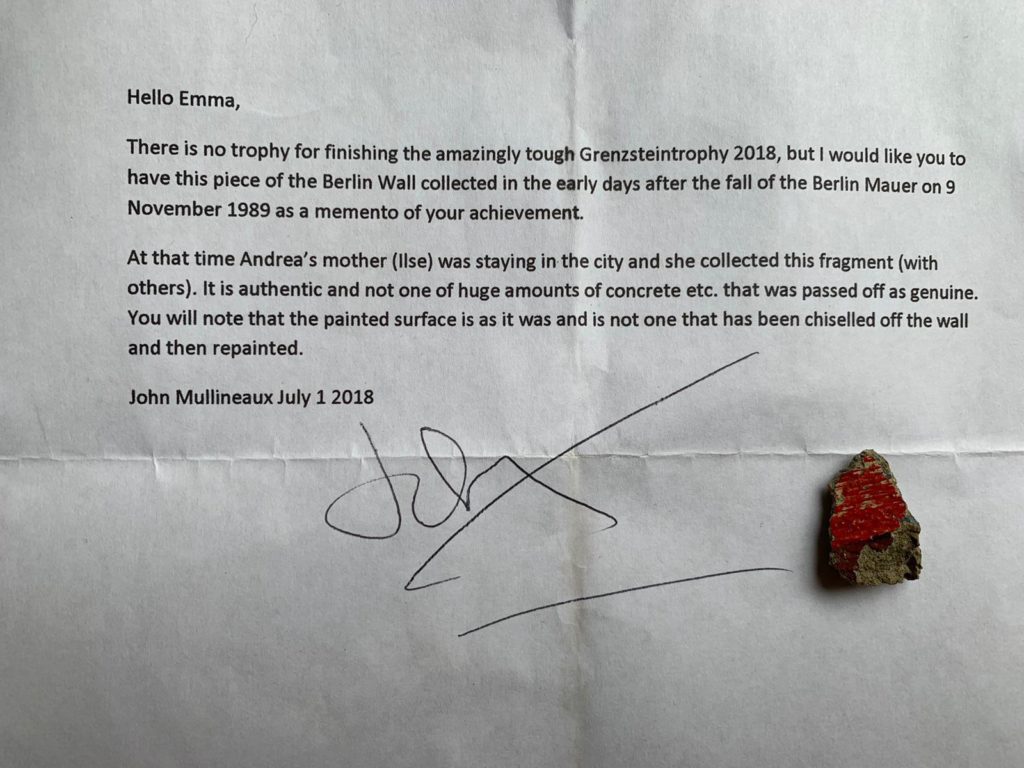
Last modified: 18th June 2020
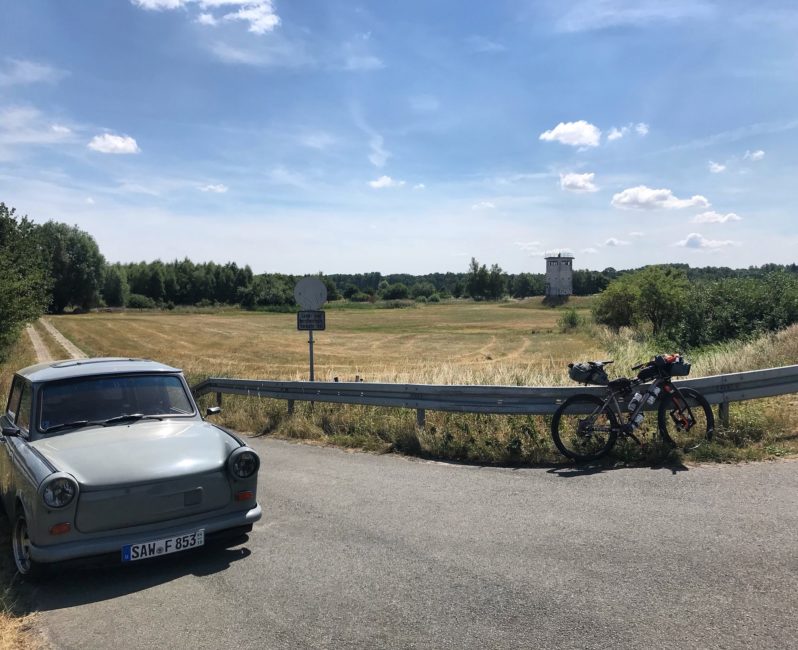
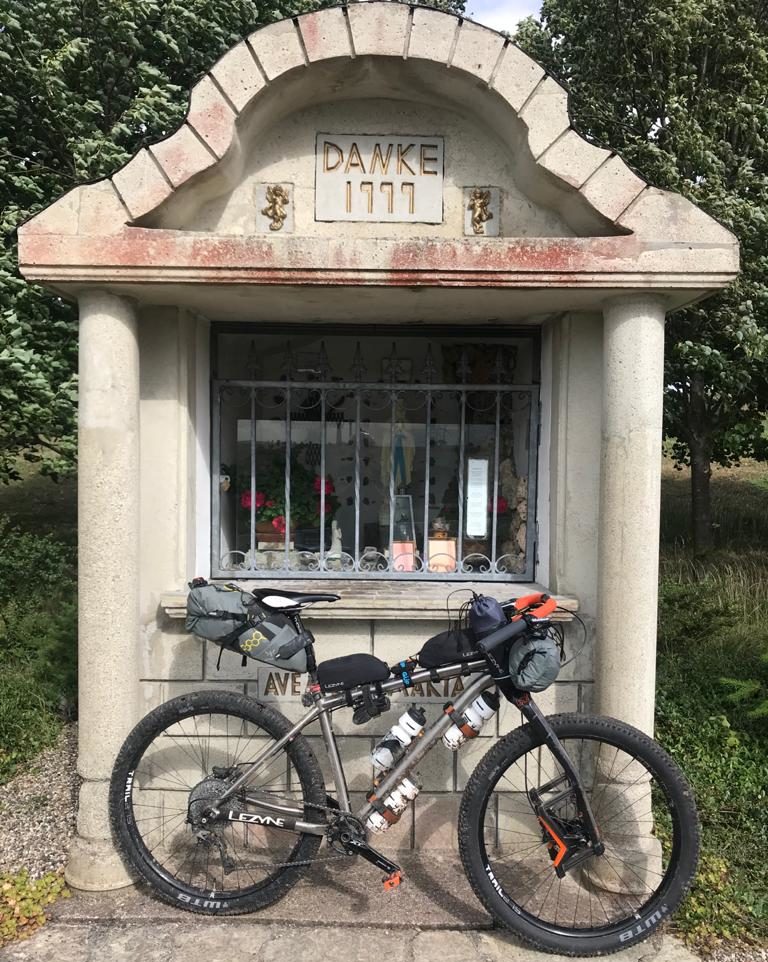
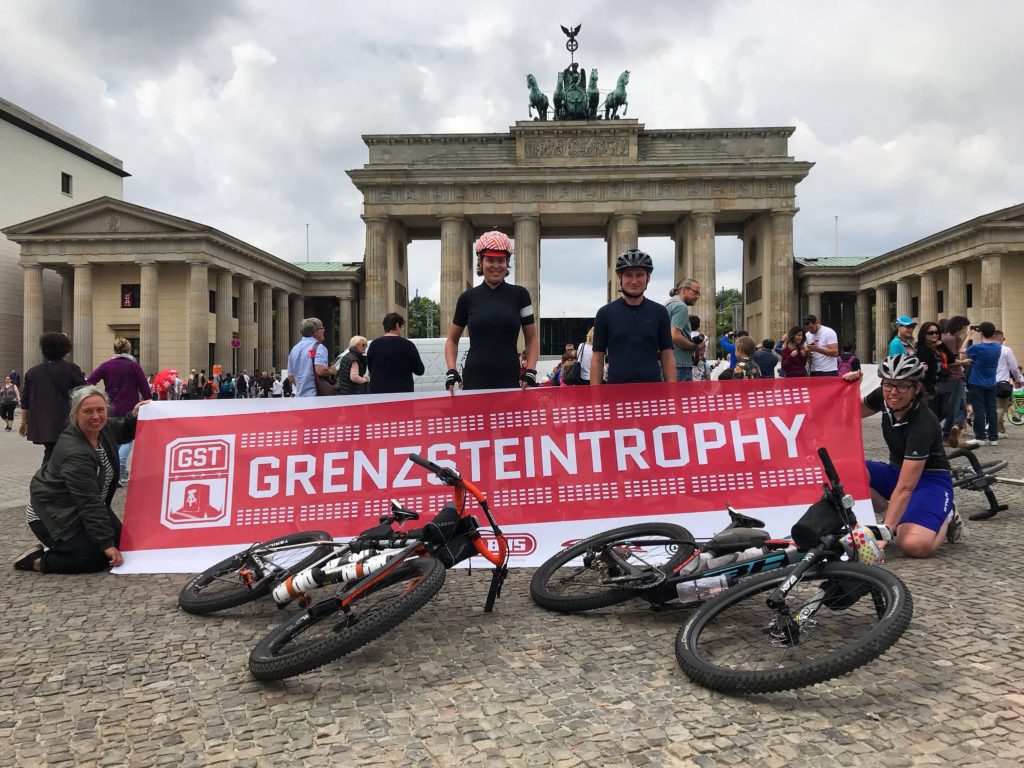


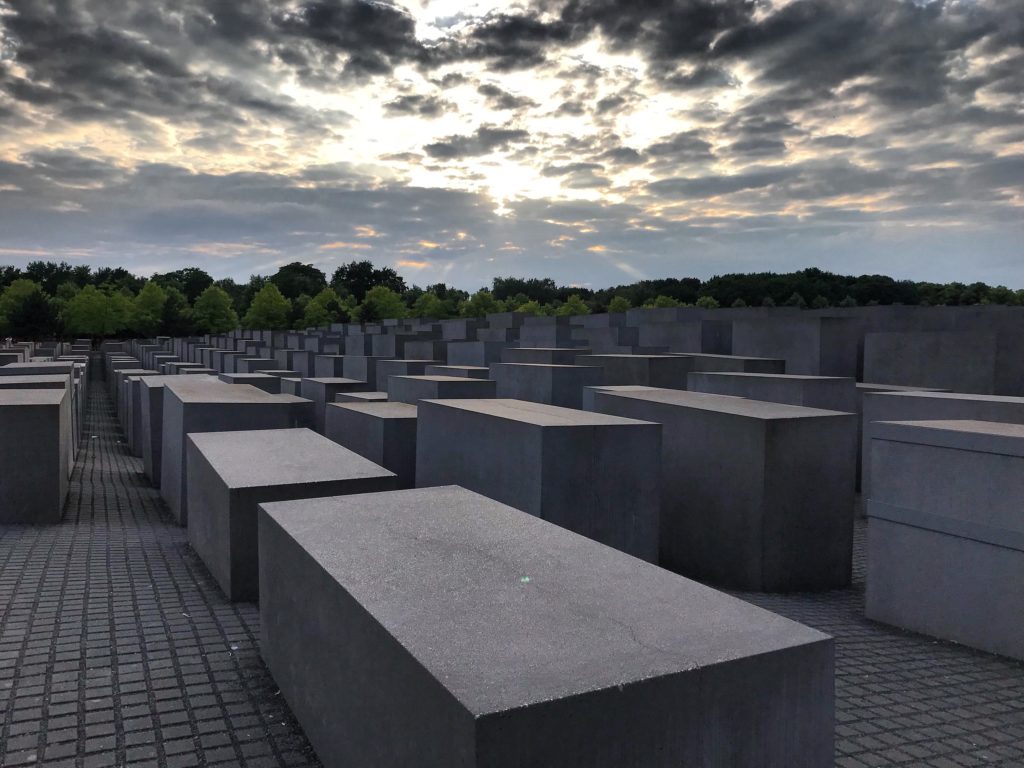
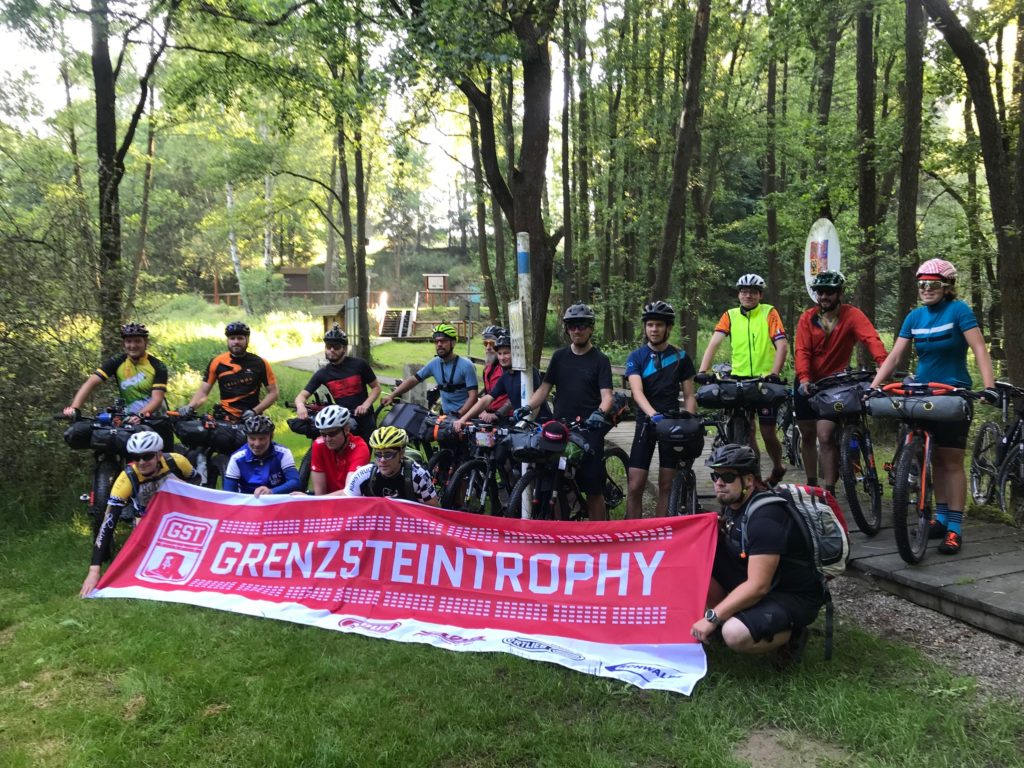

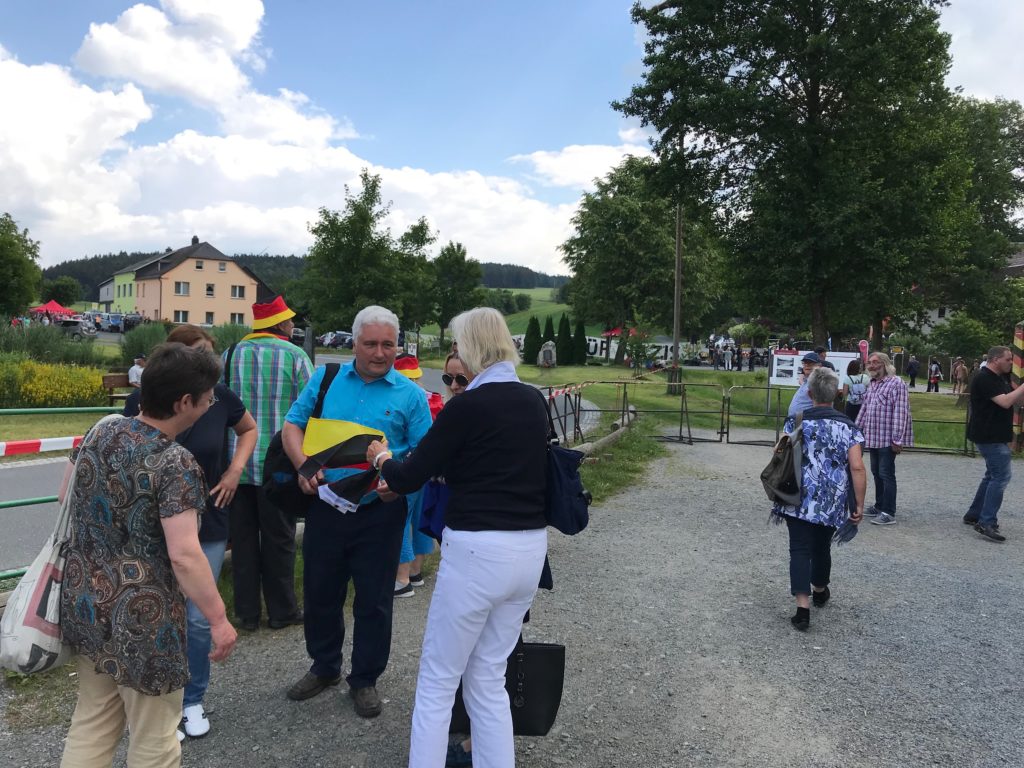
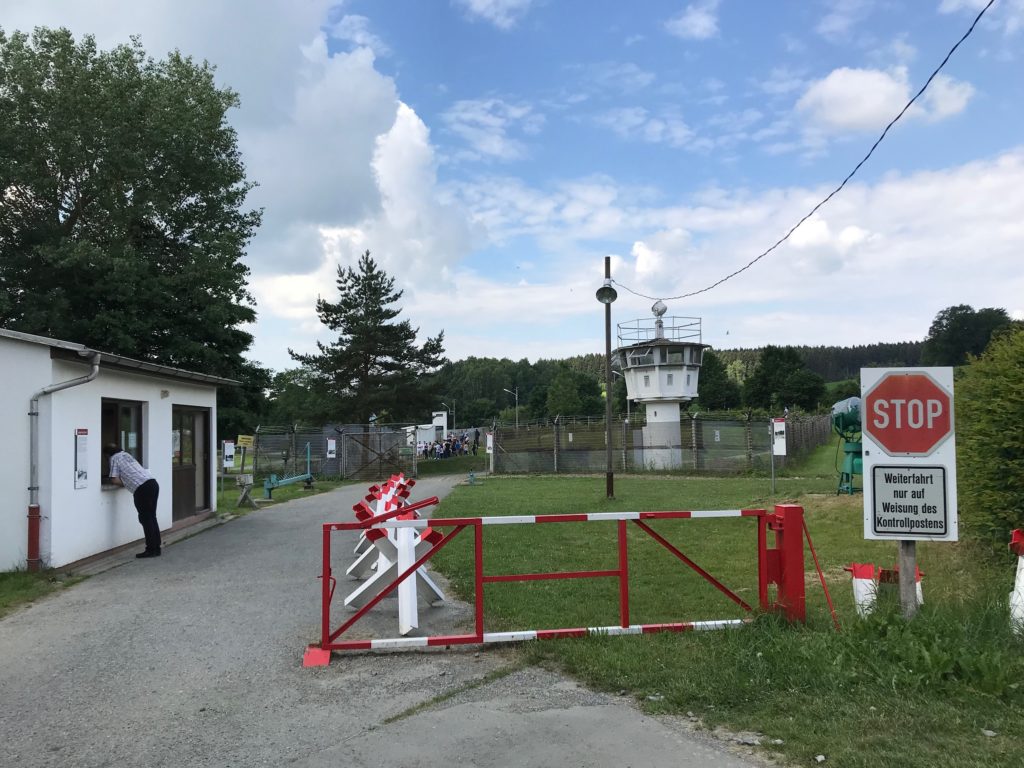

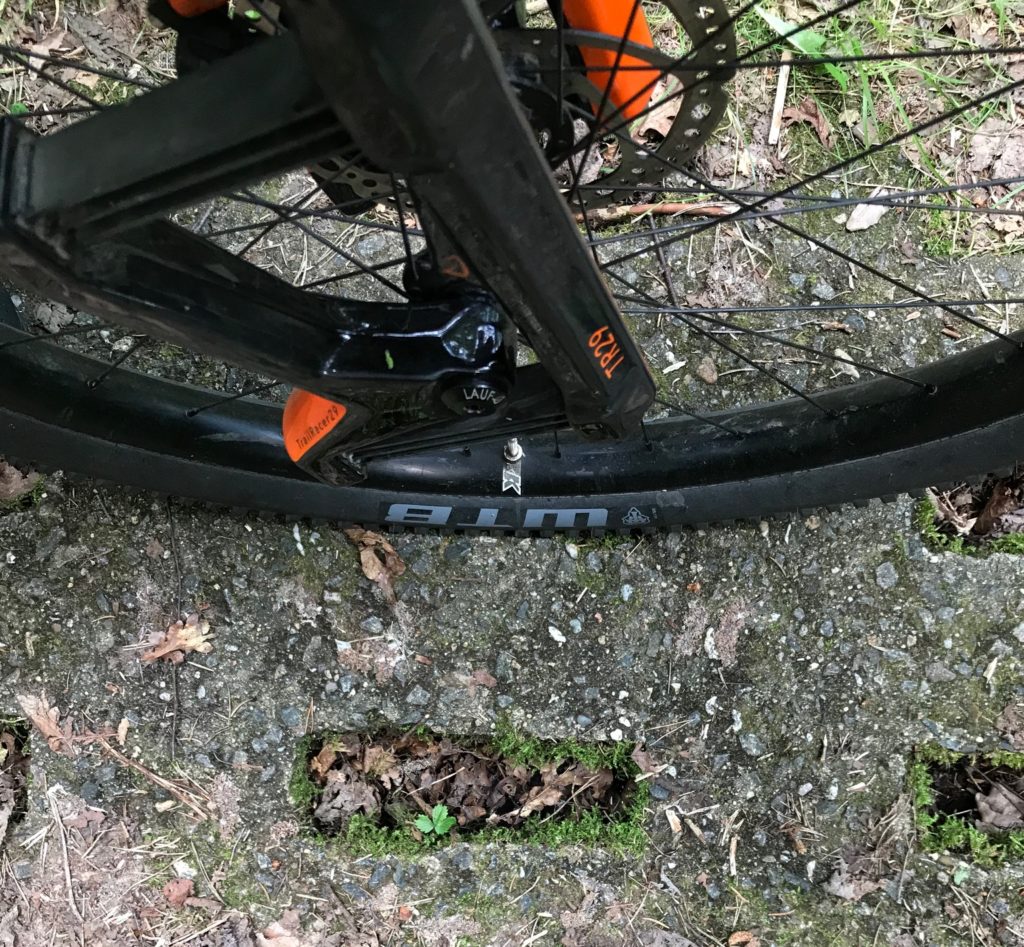
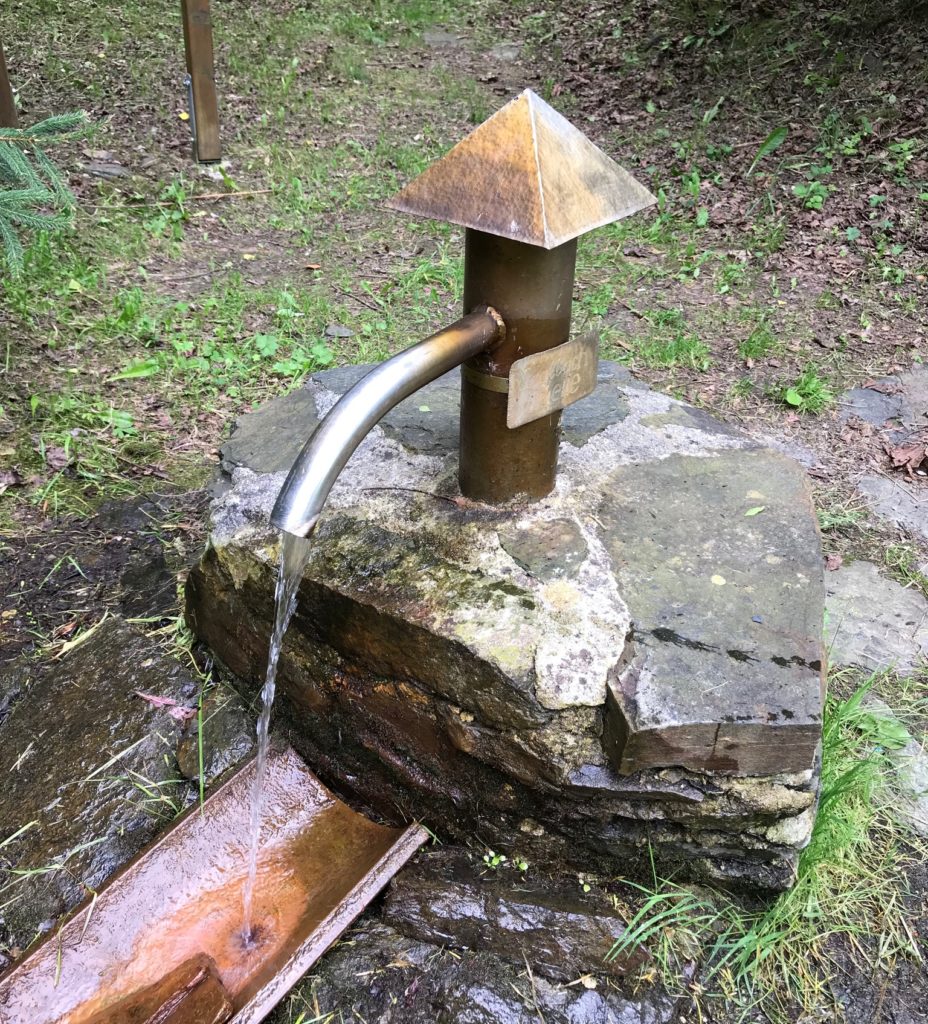


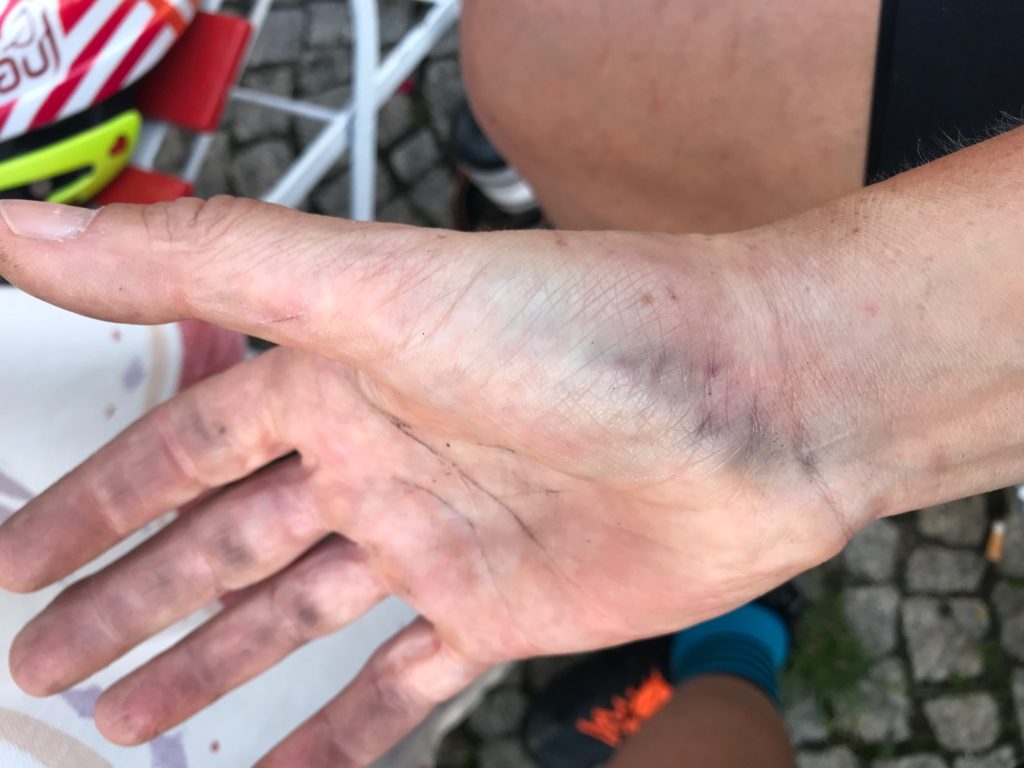
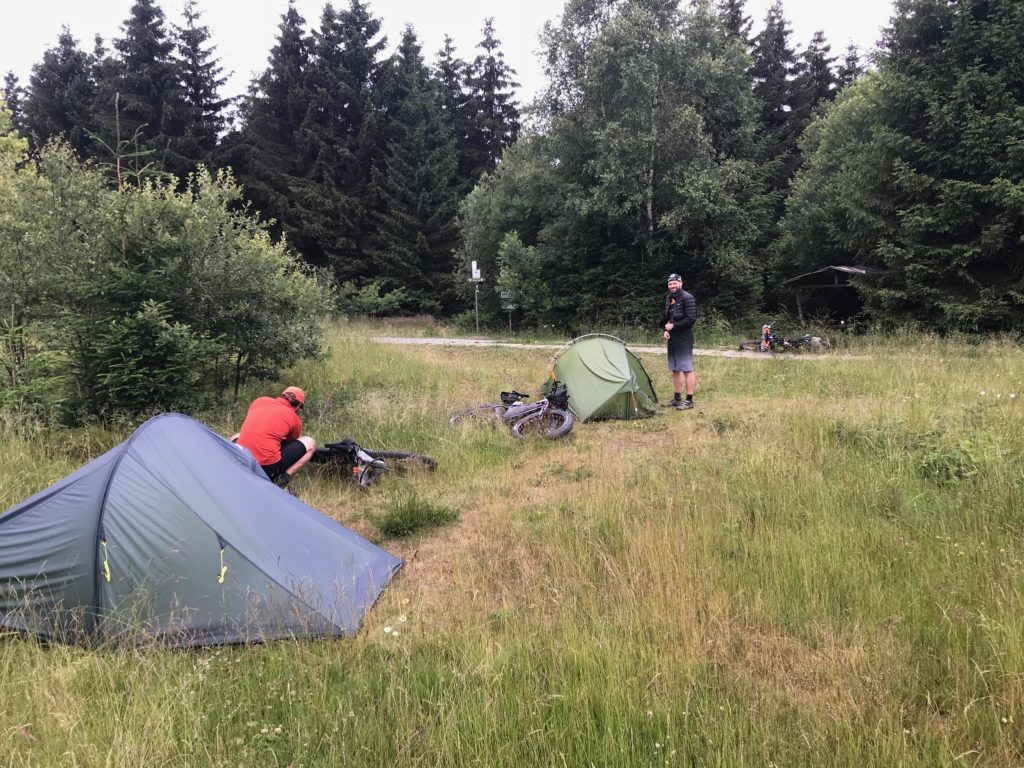
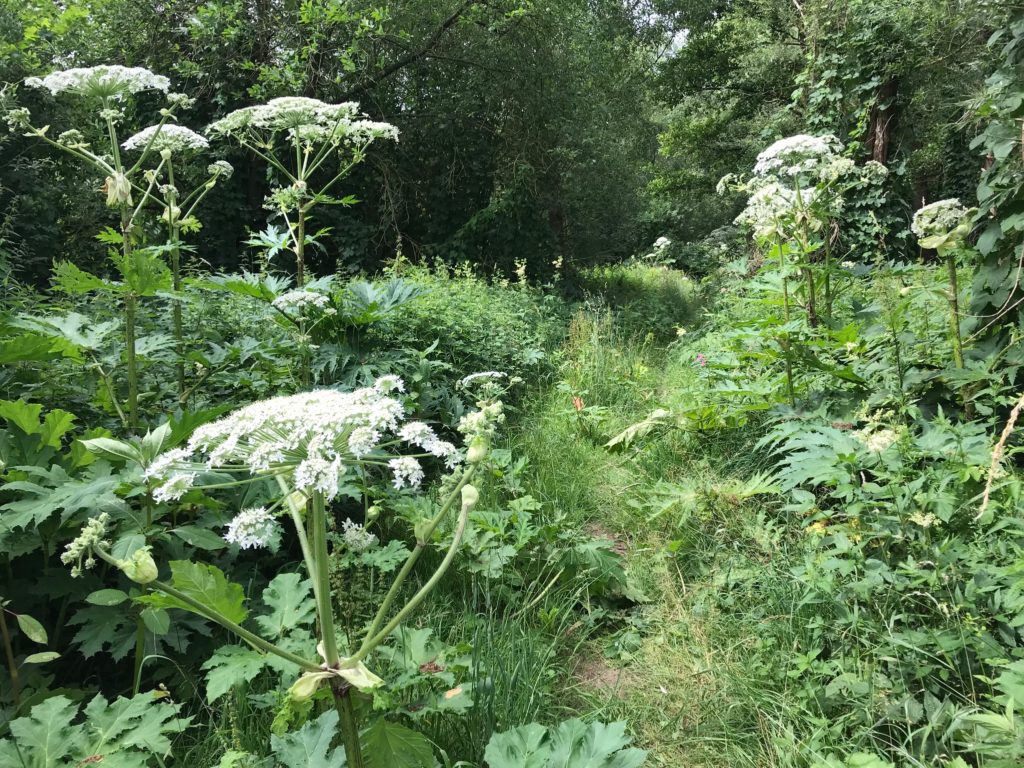
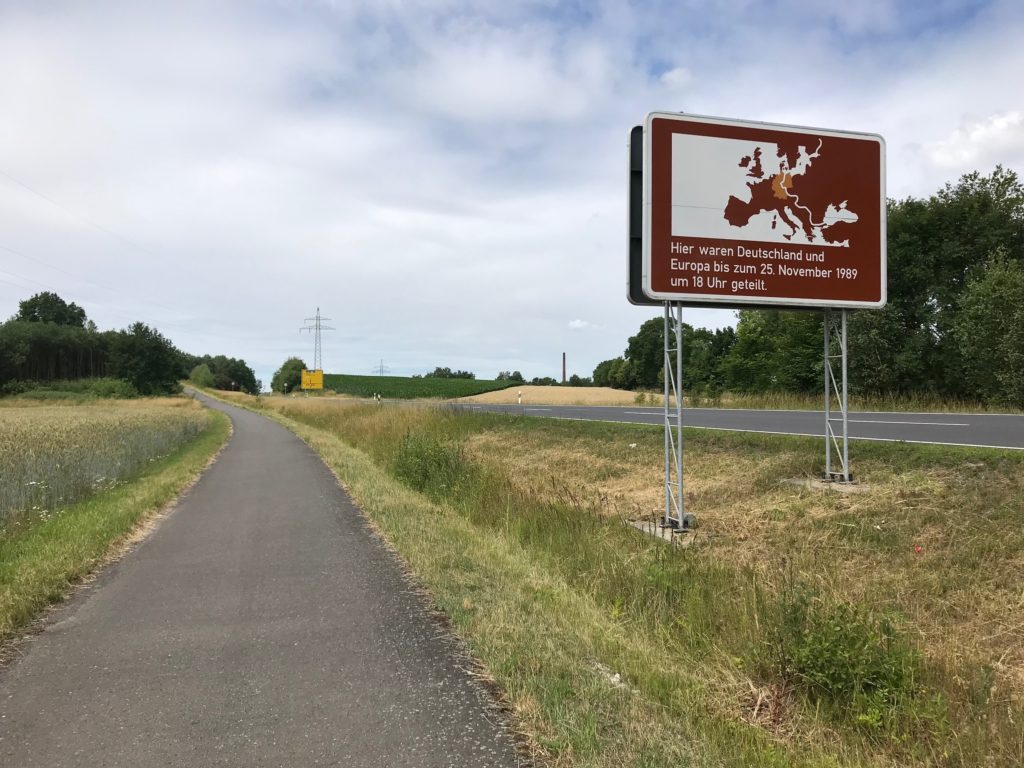


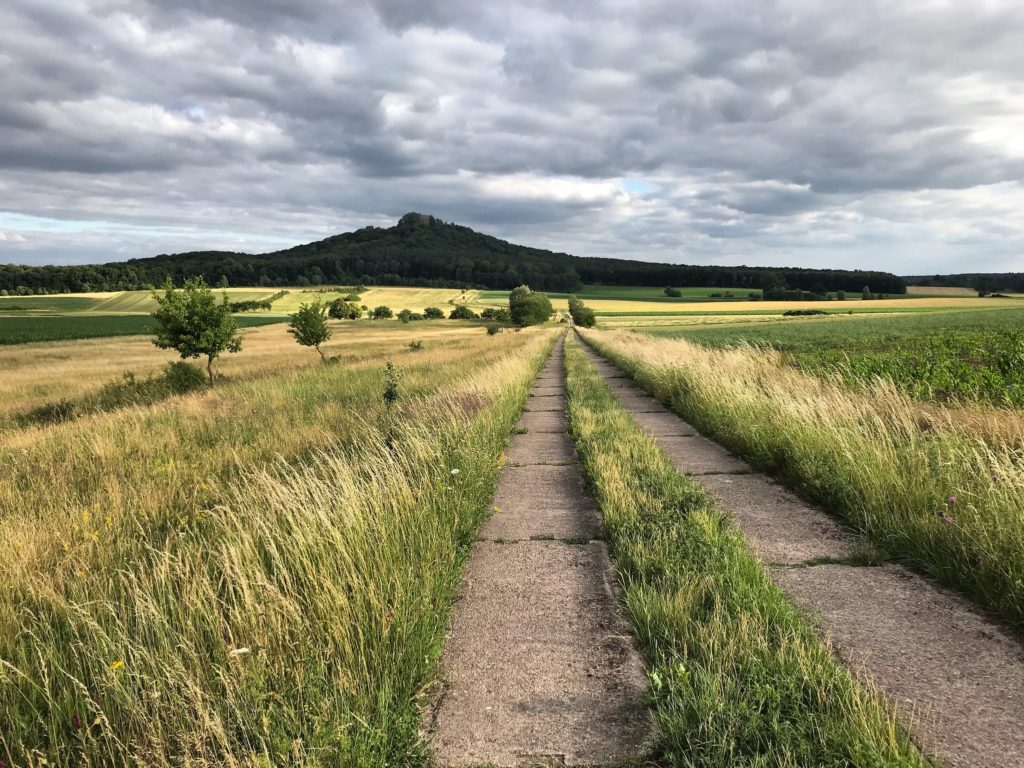

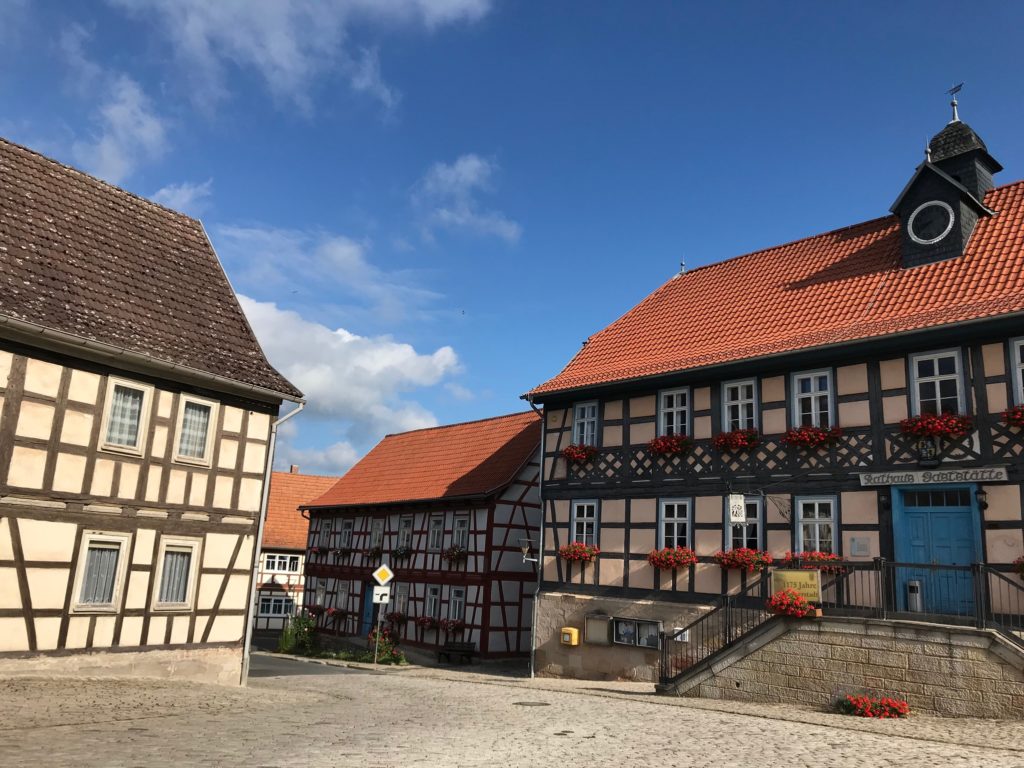


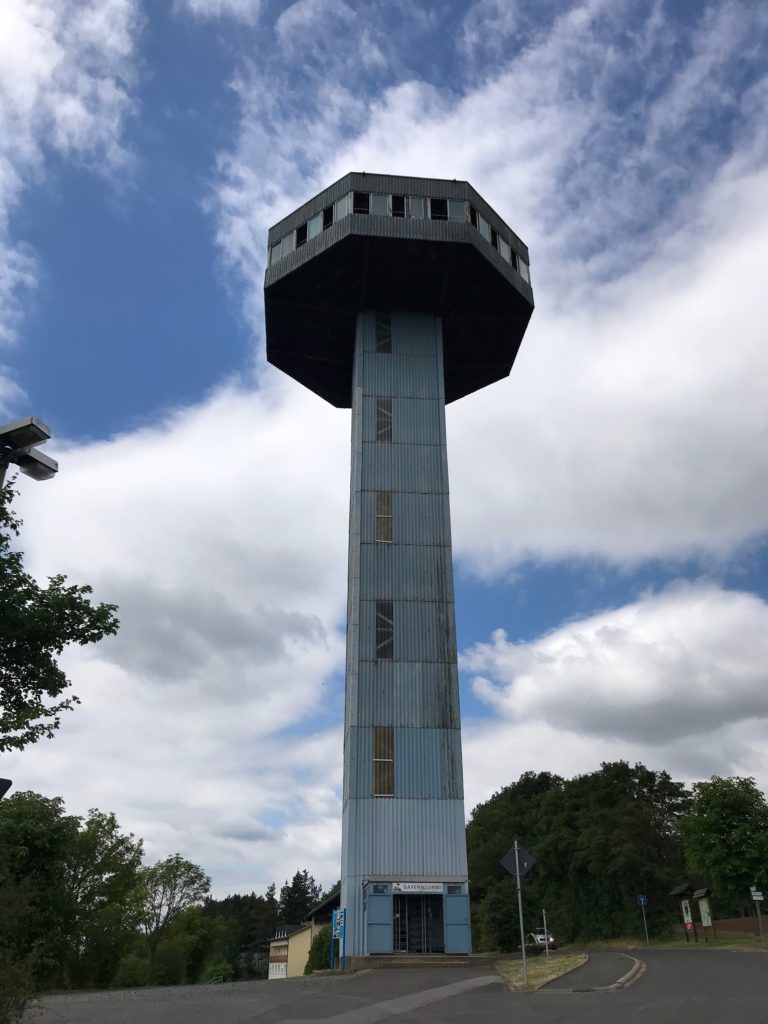
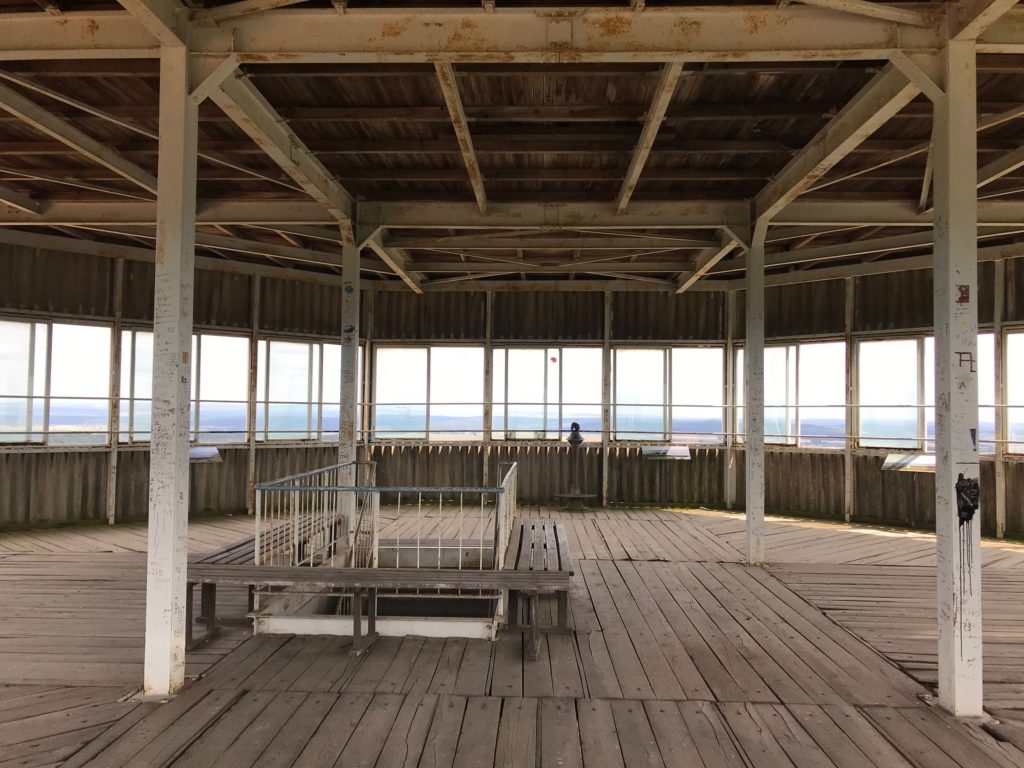
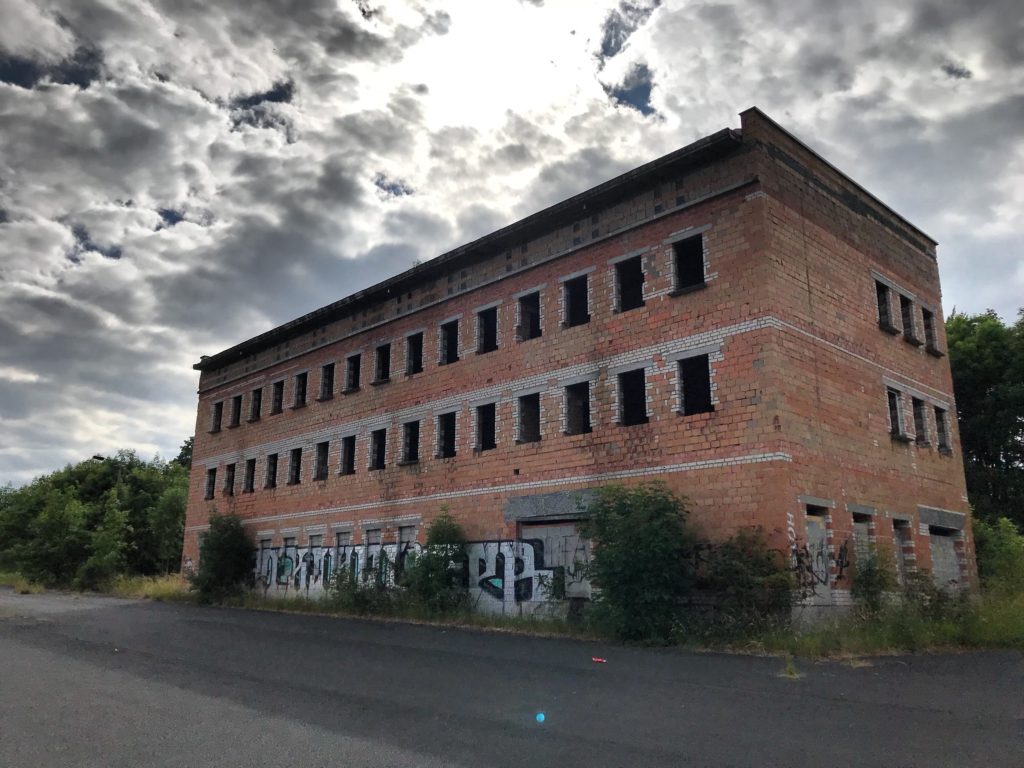

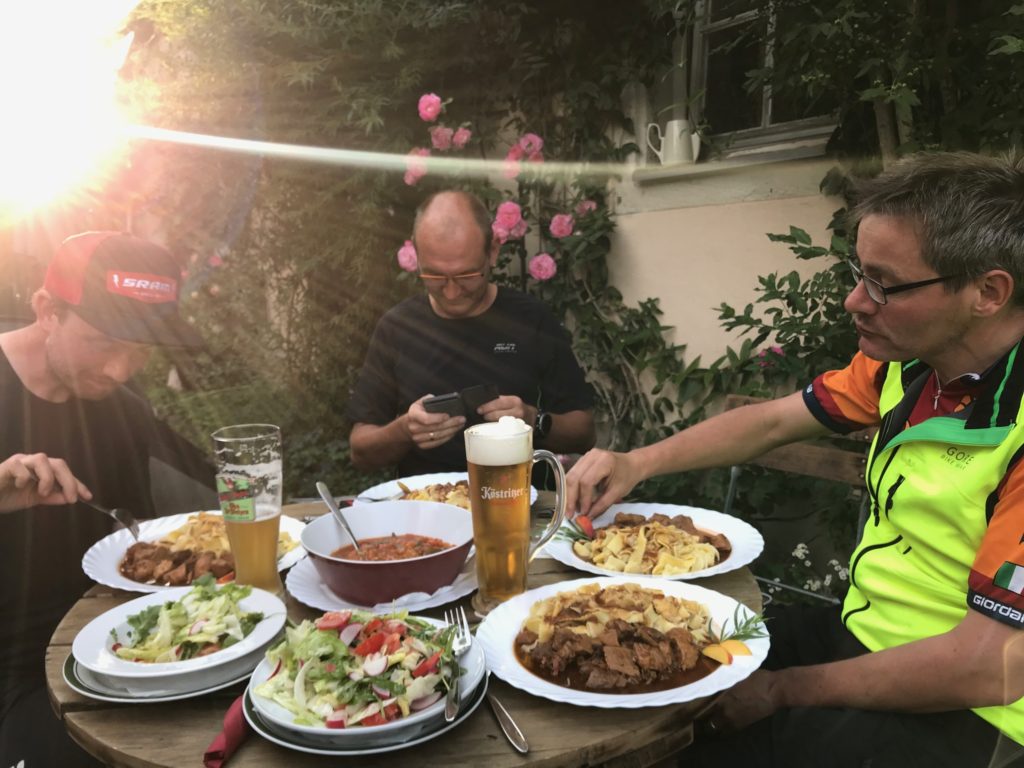


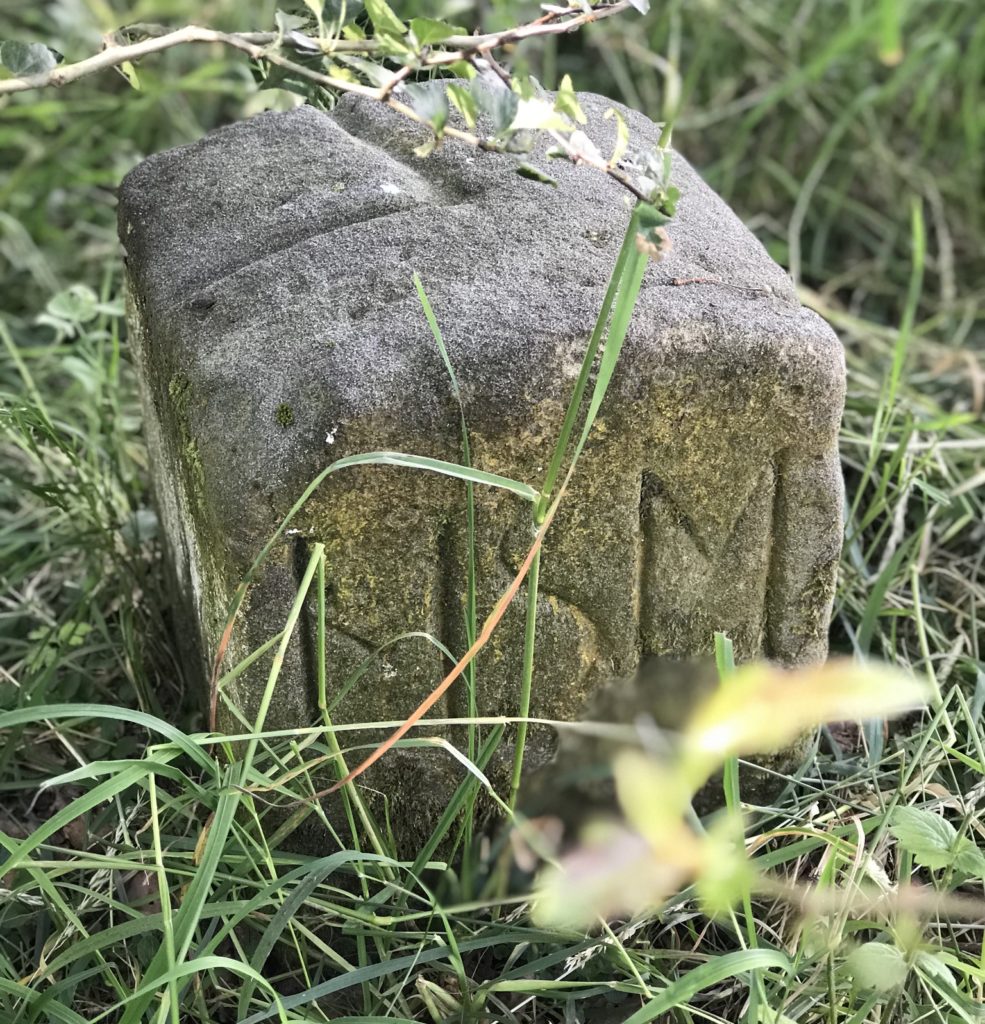

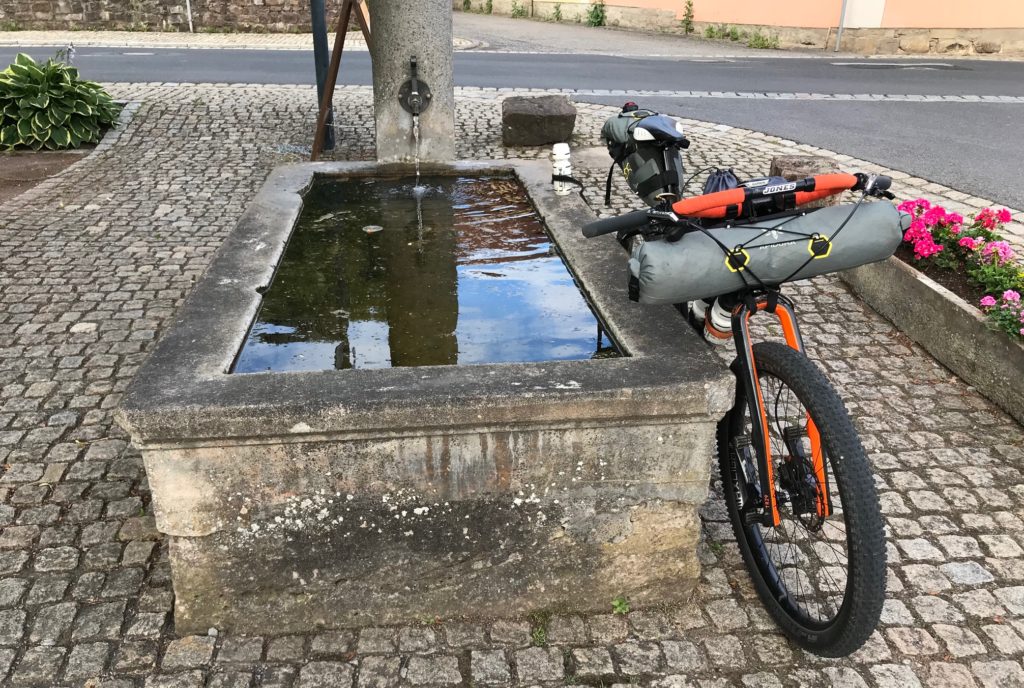

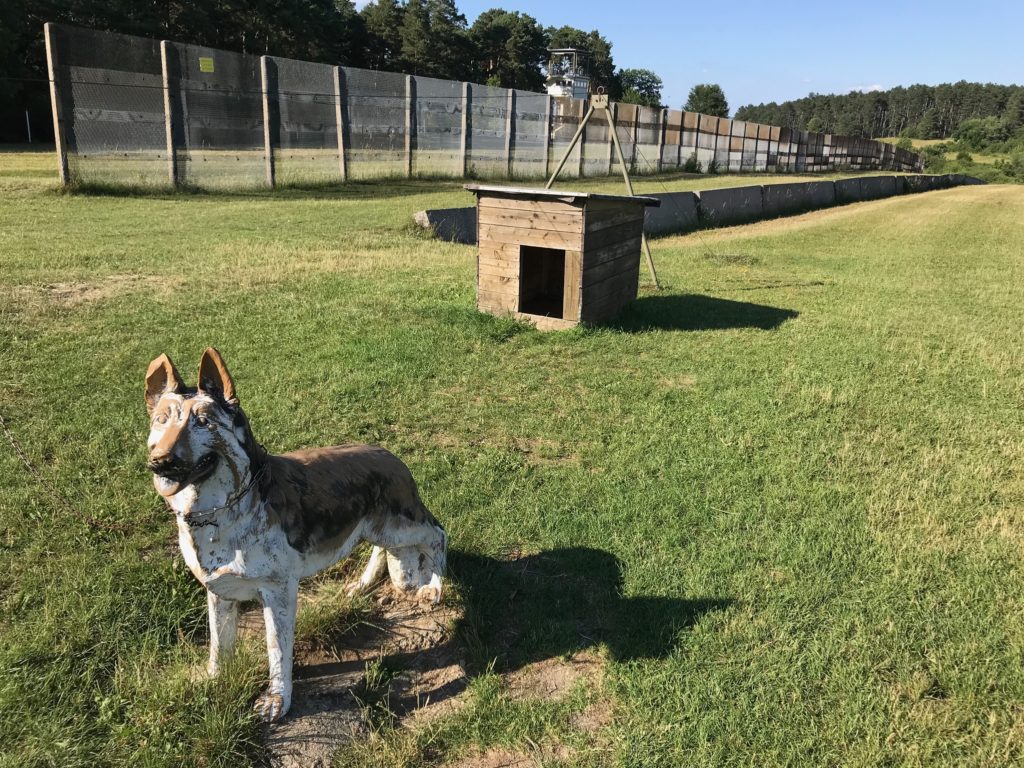
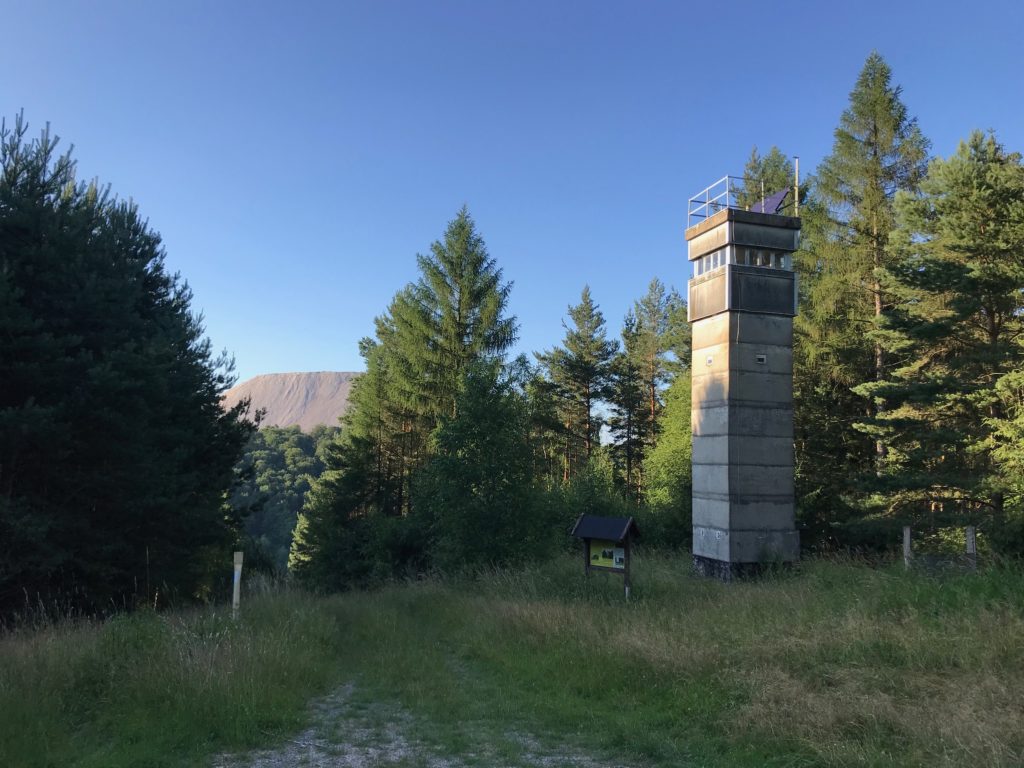
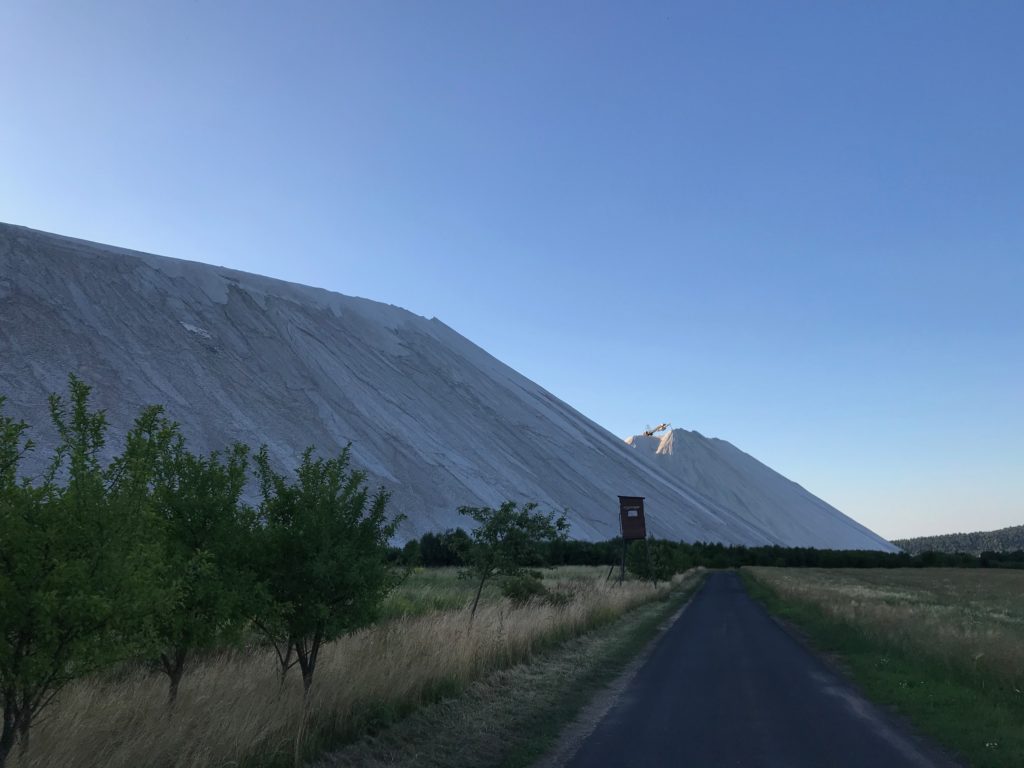

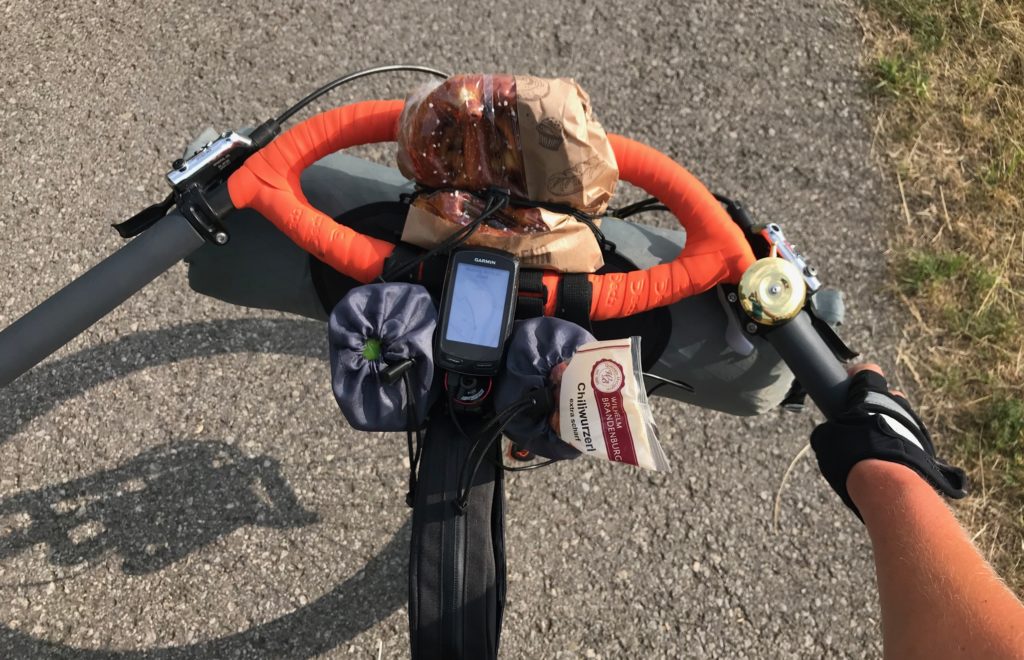

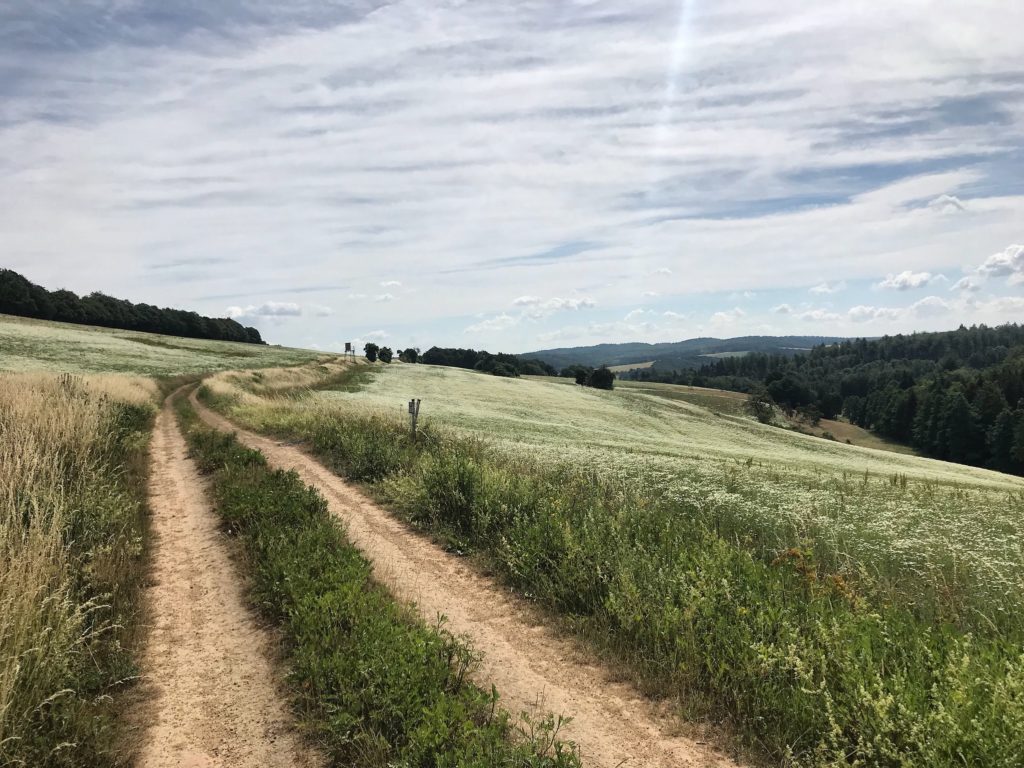
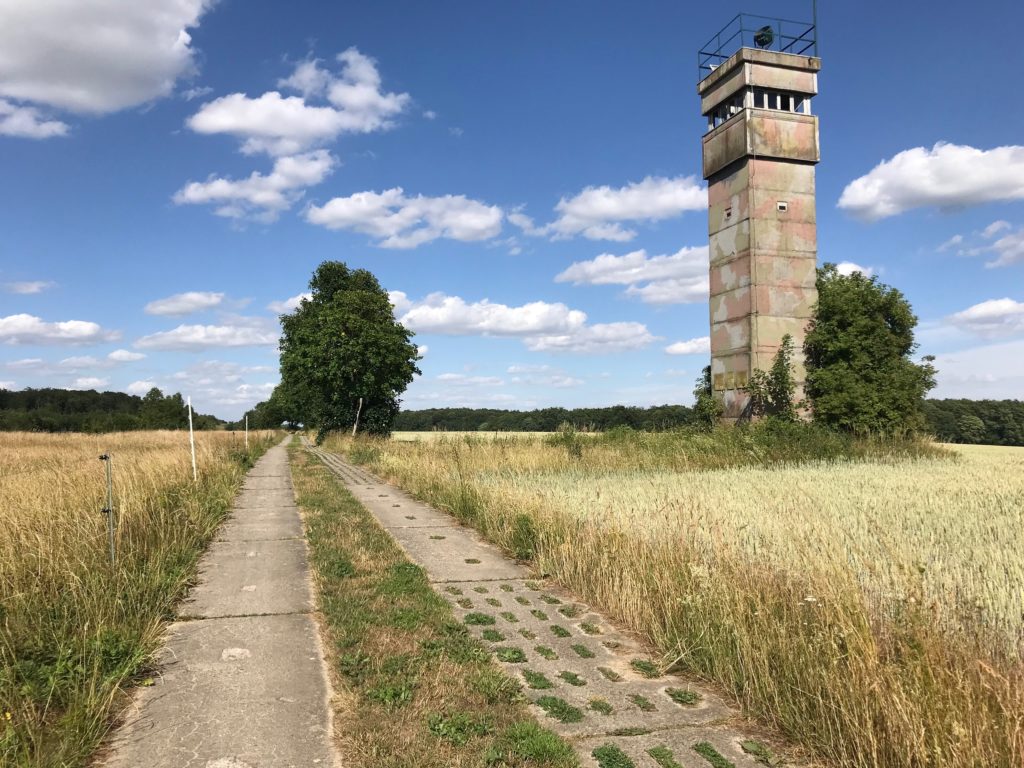


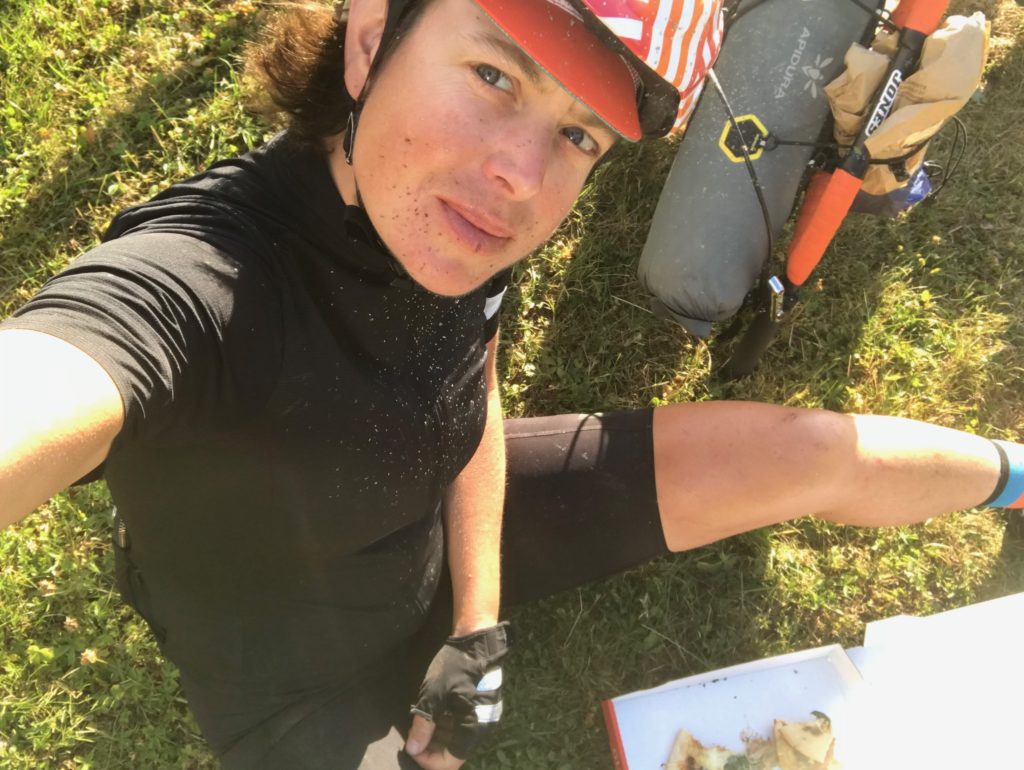
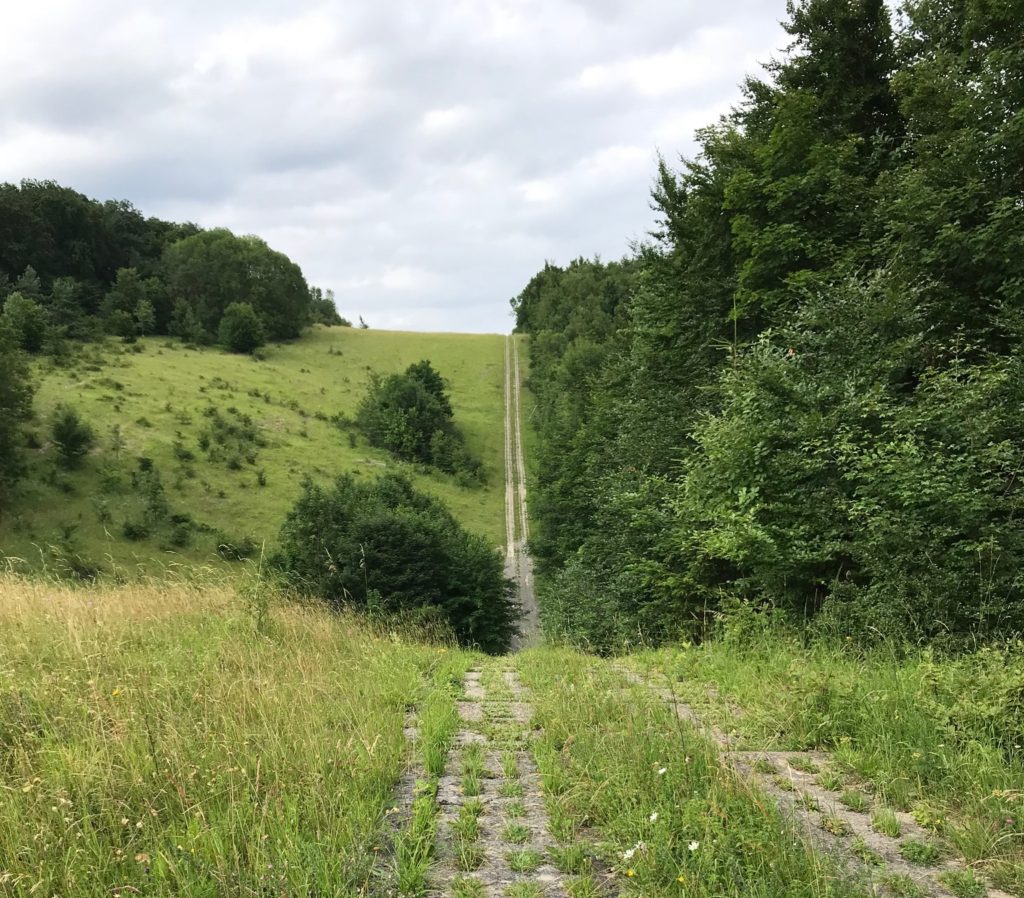

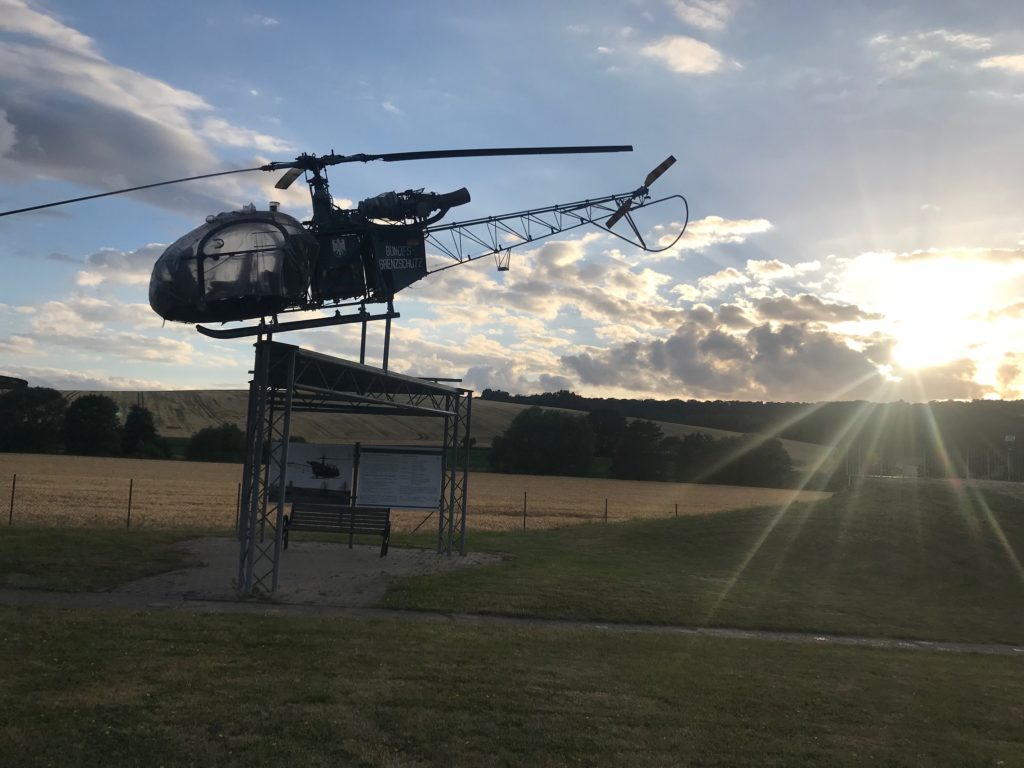
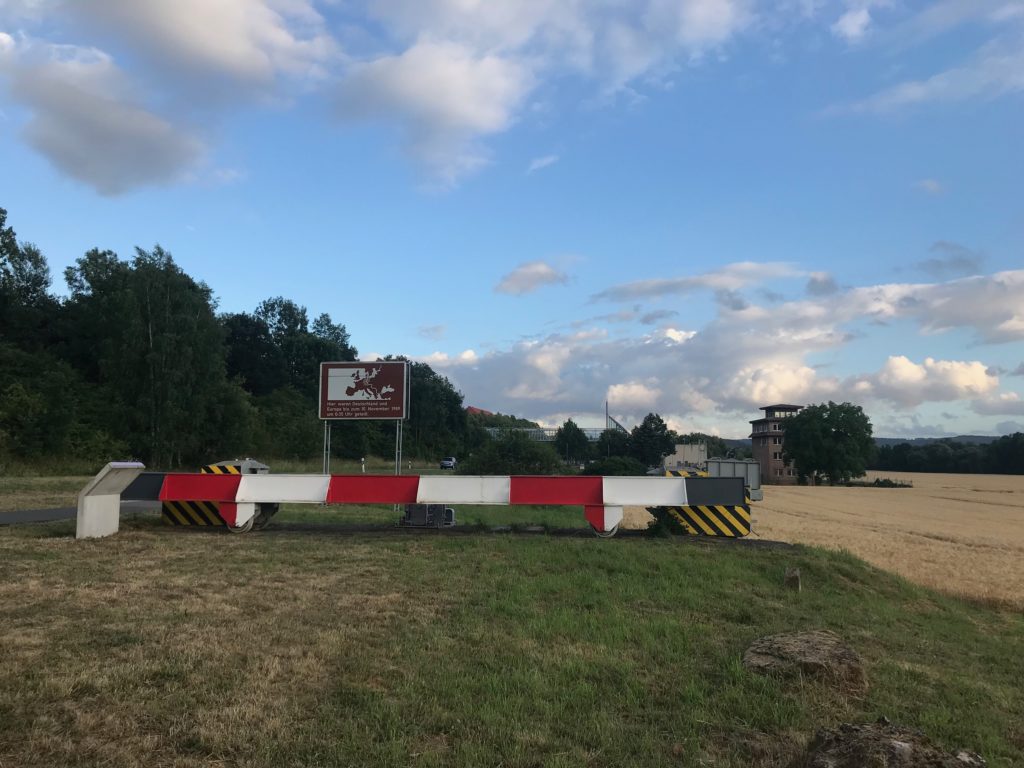
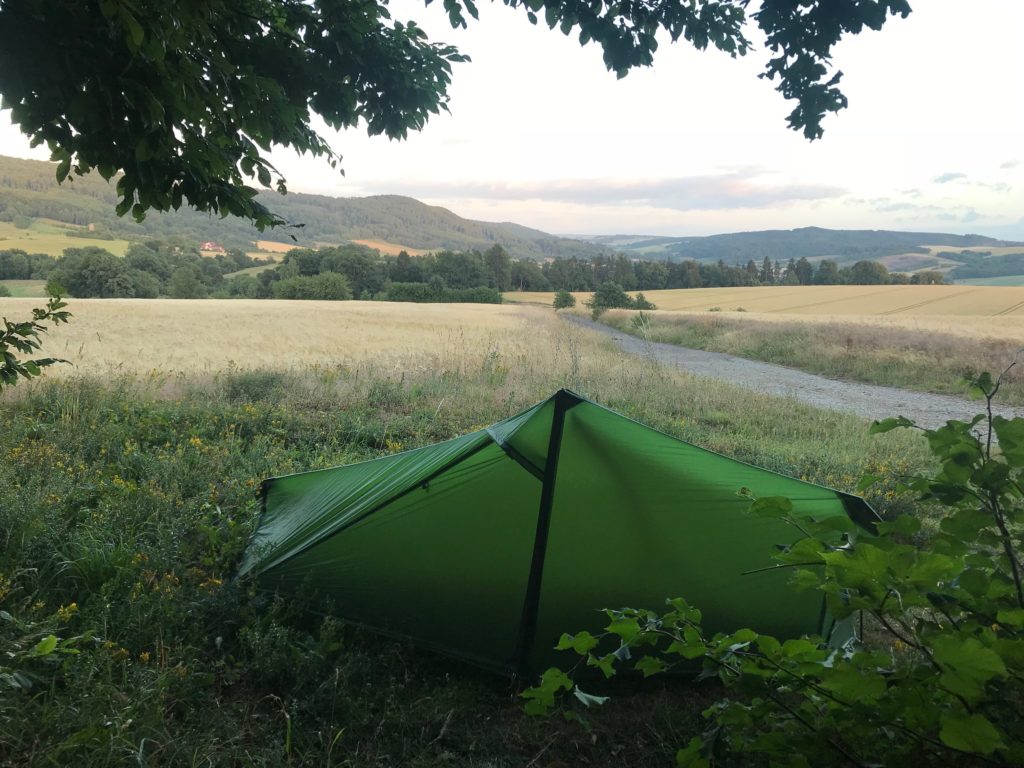
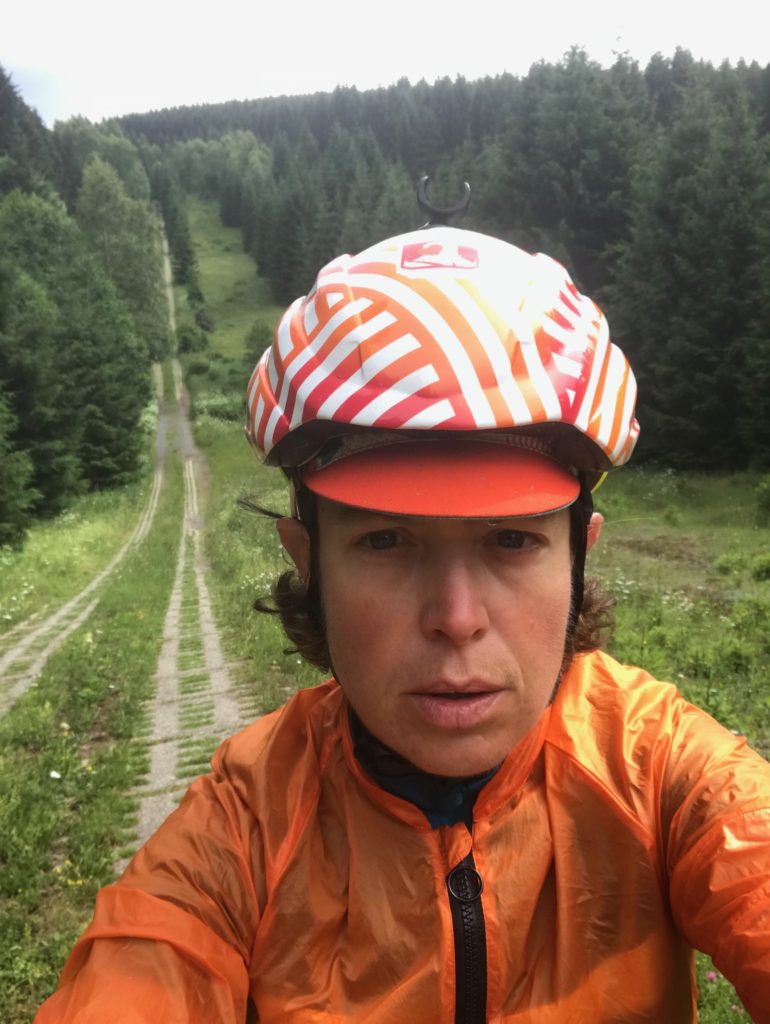
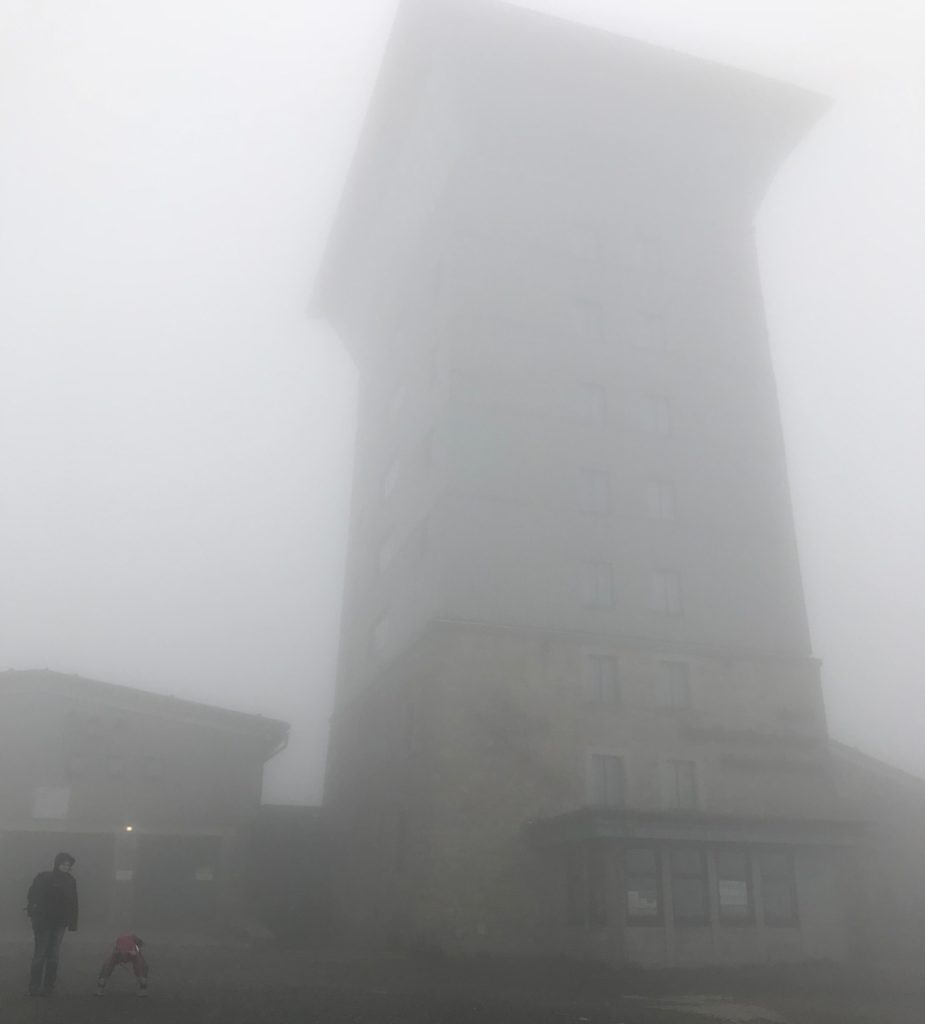

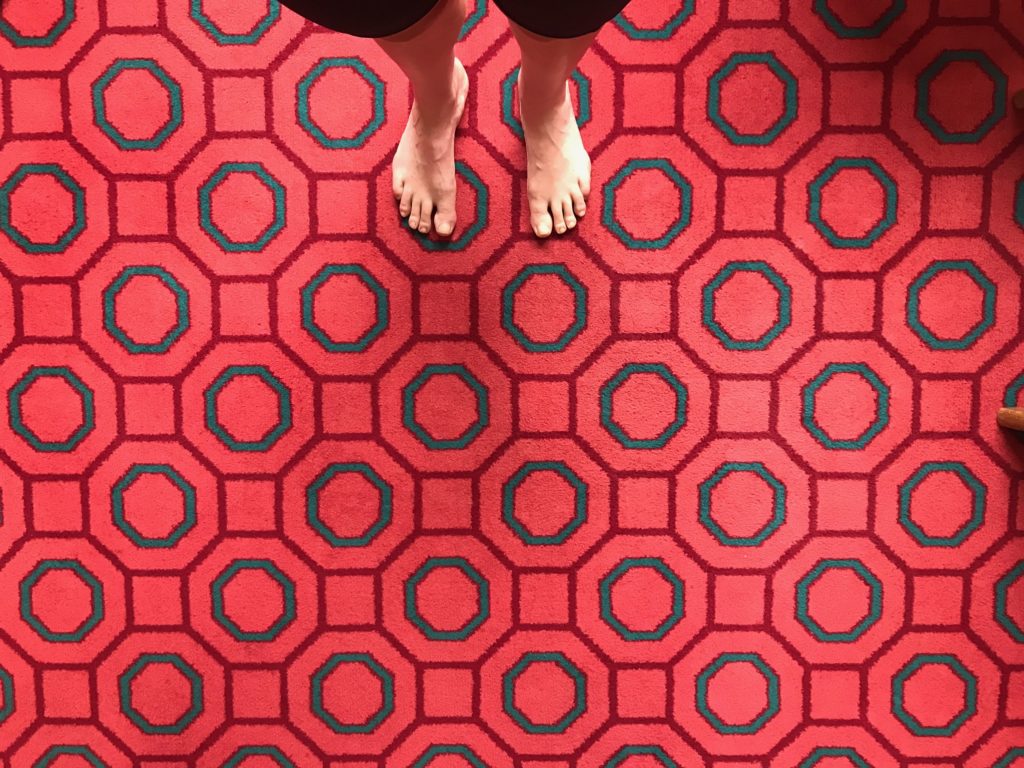


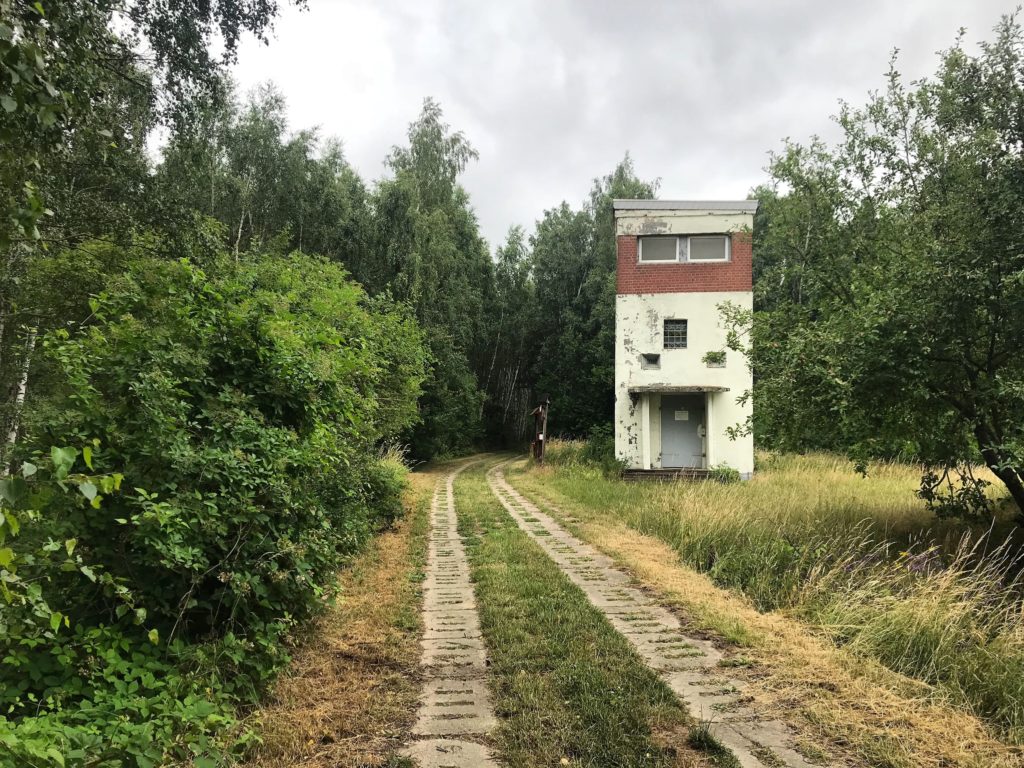
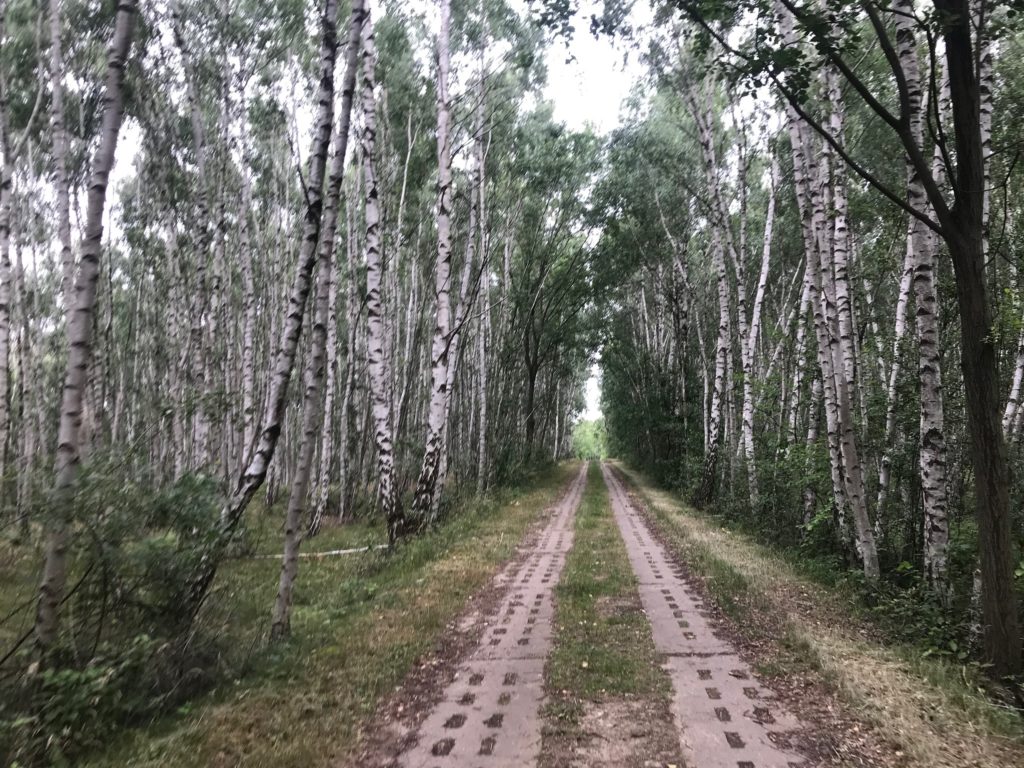
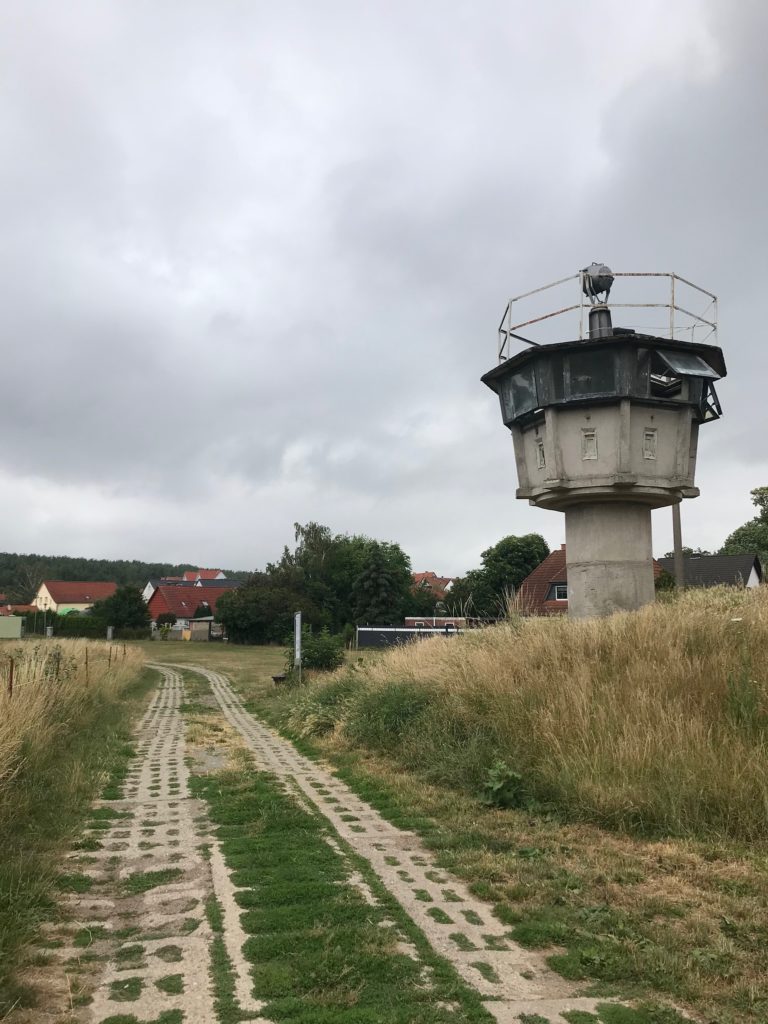
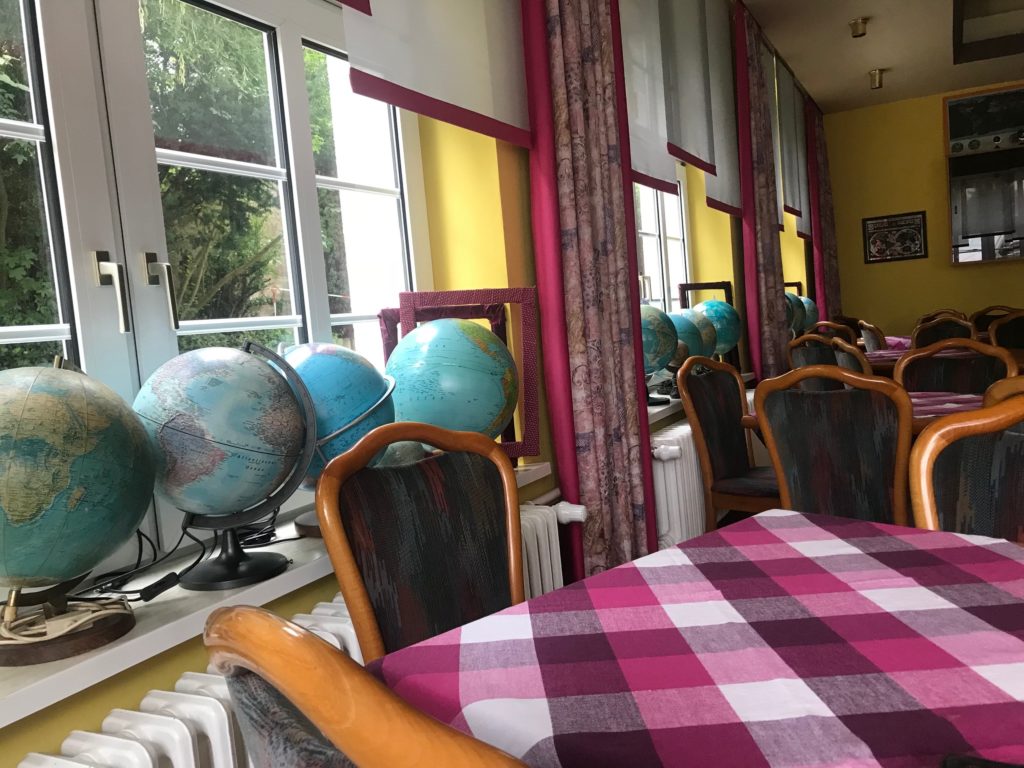
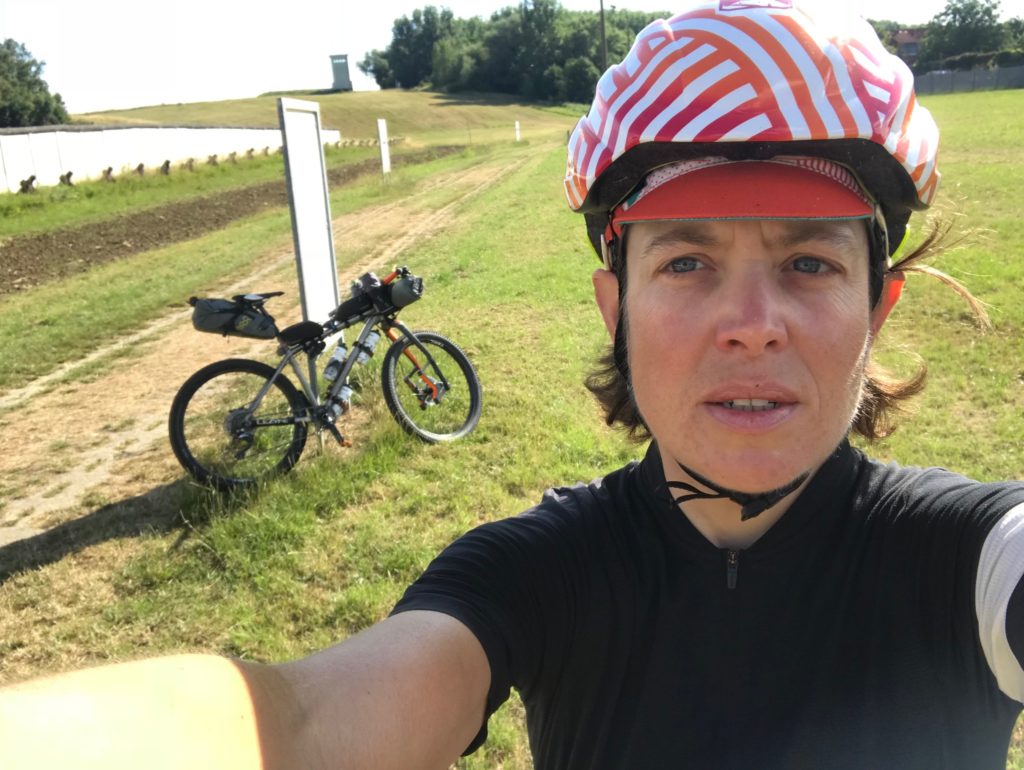
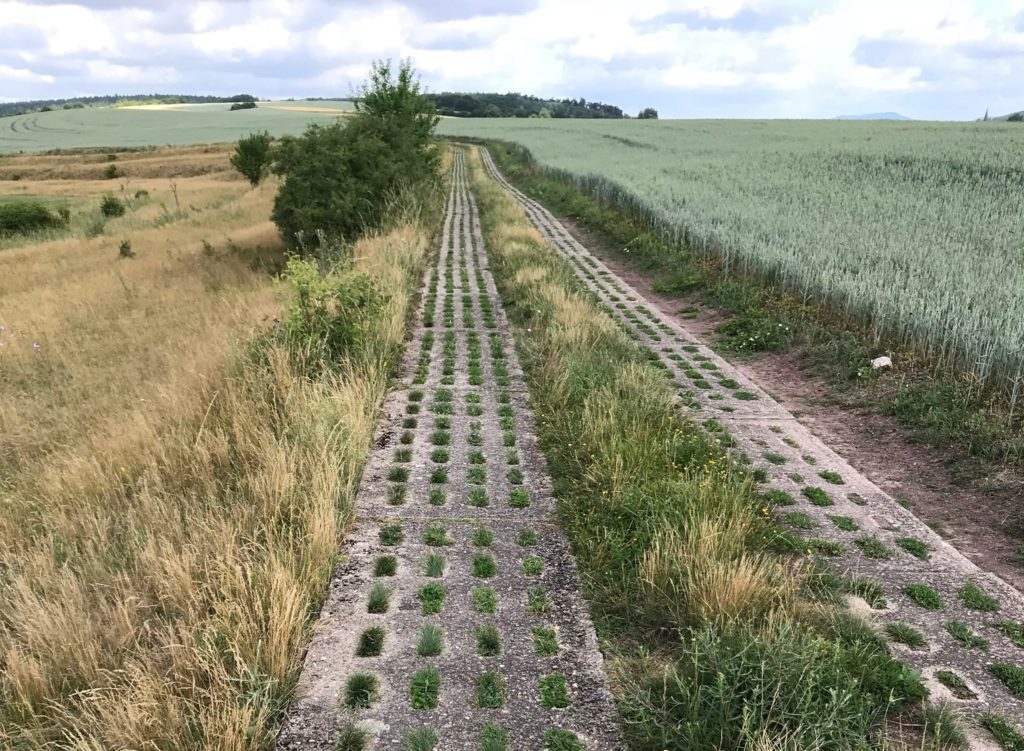
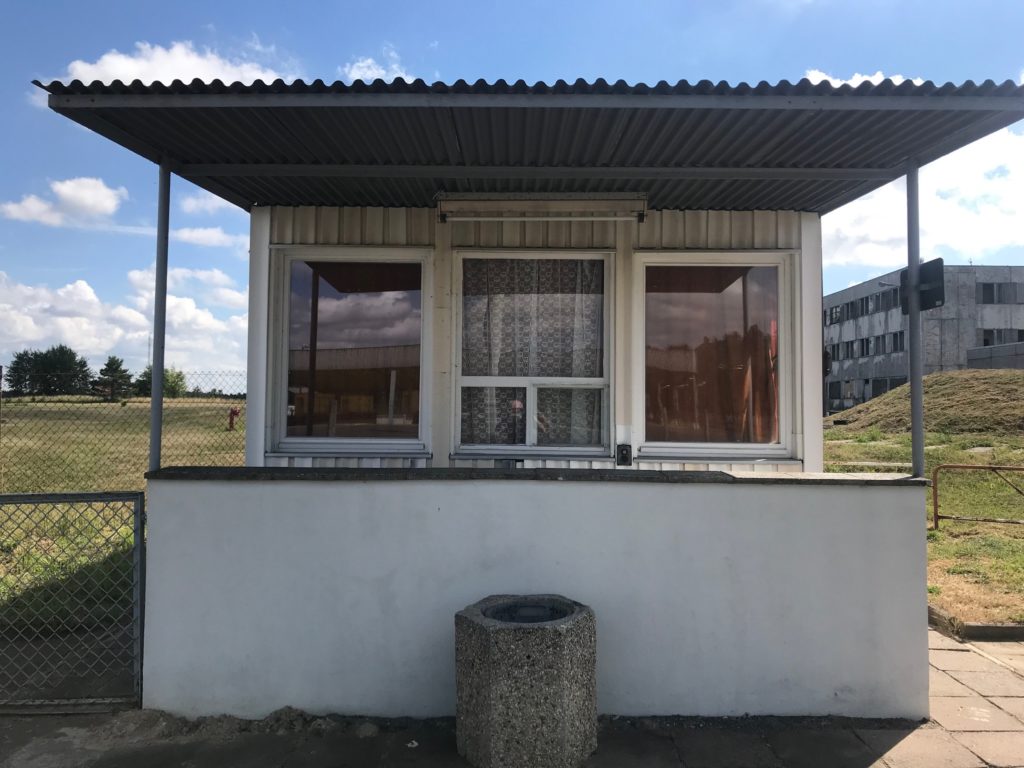

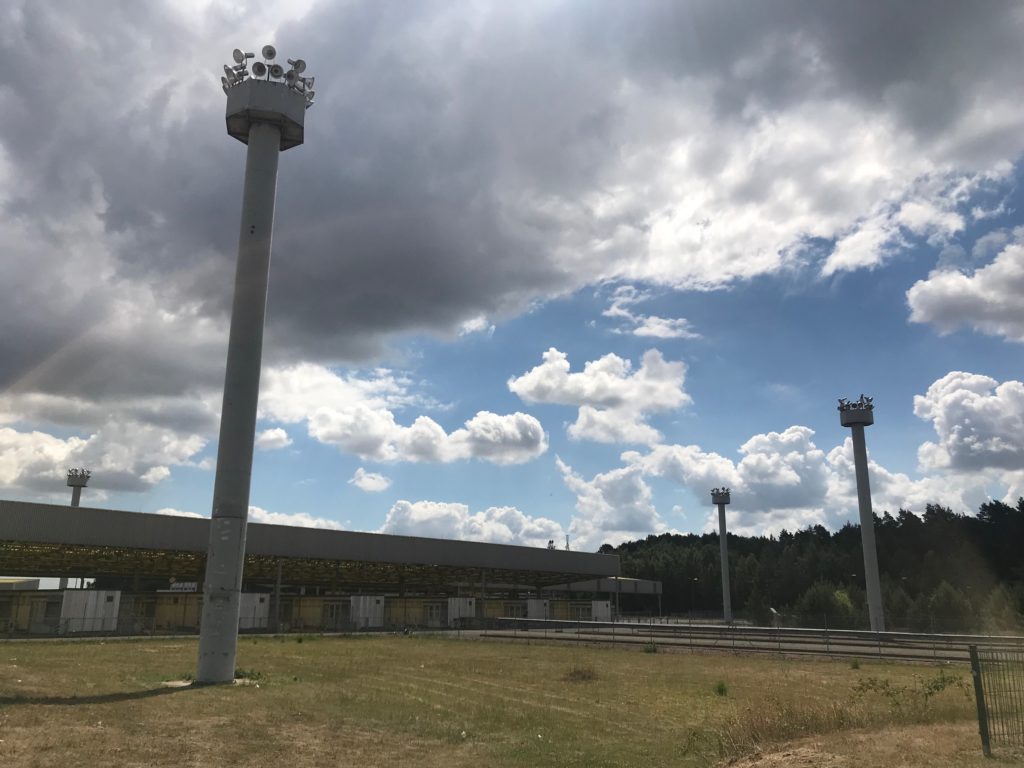
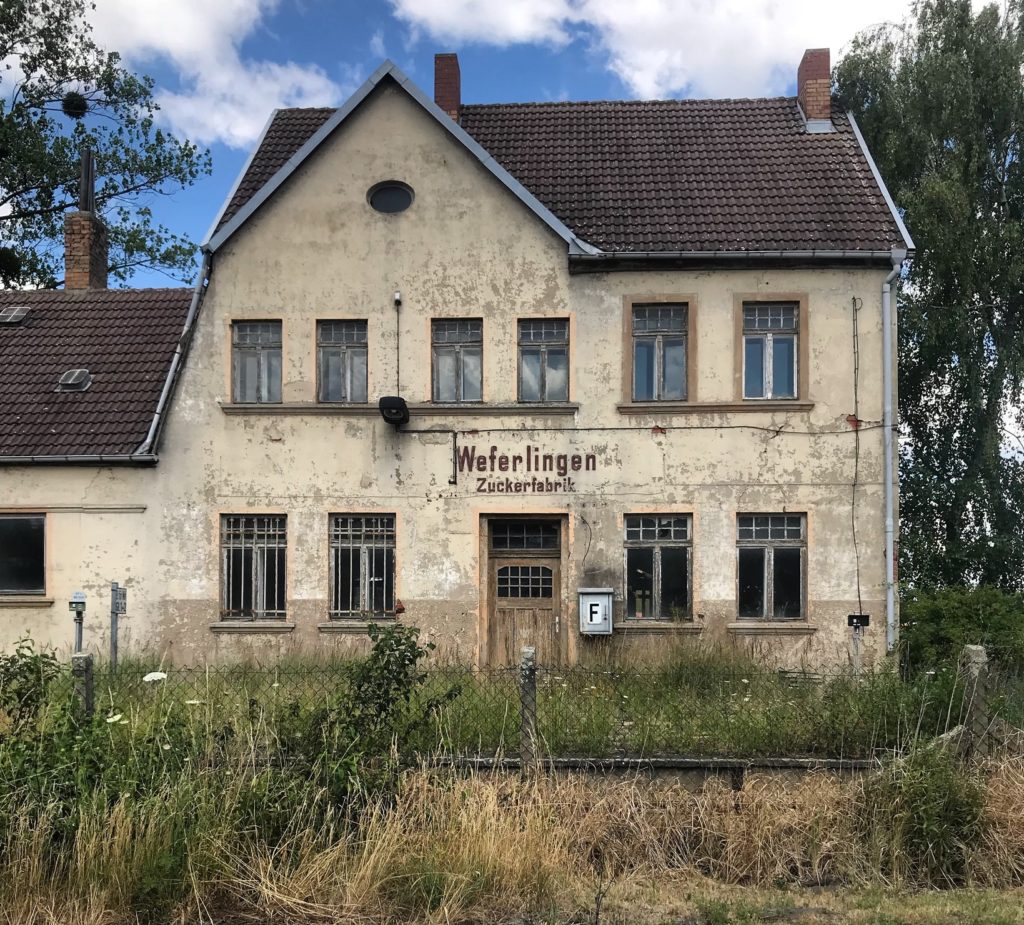
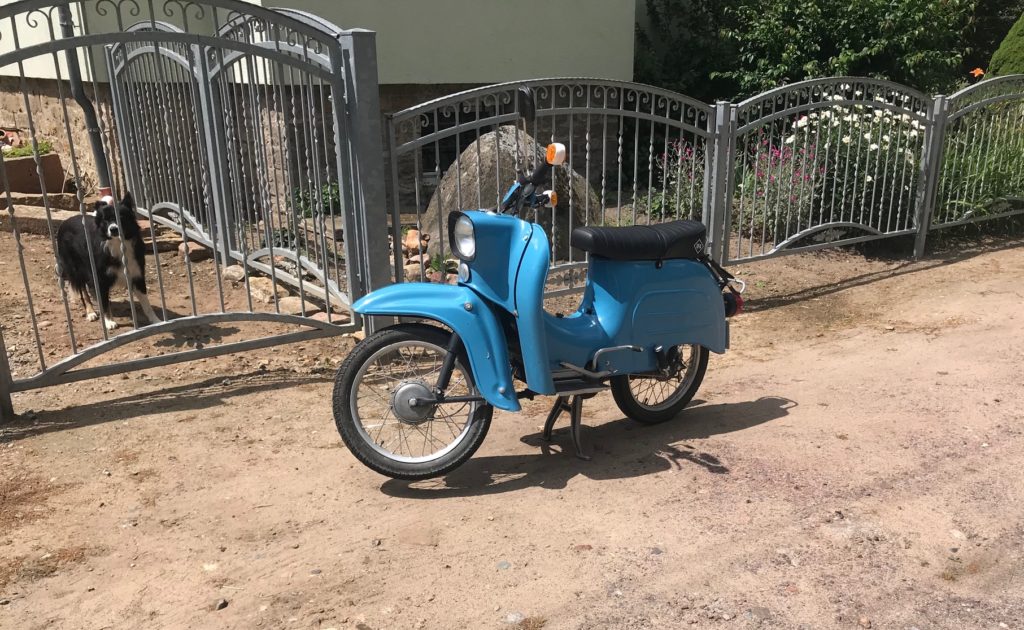


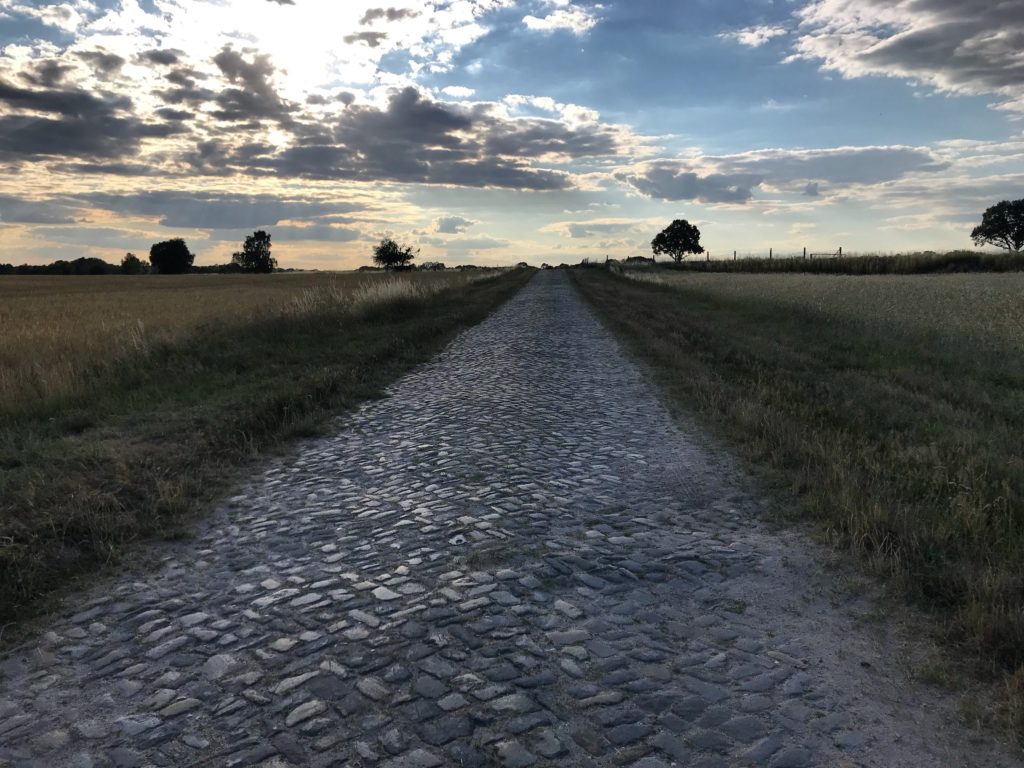
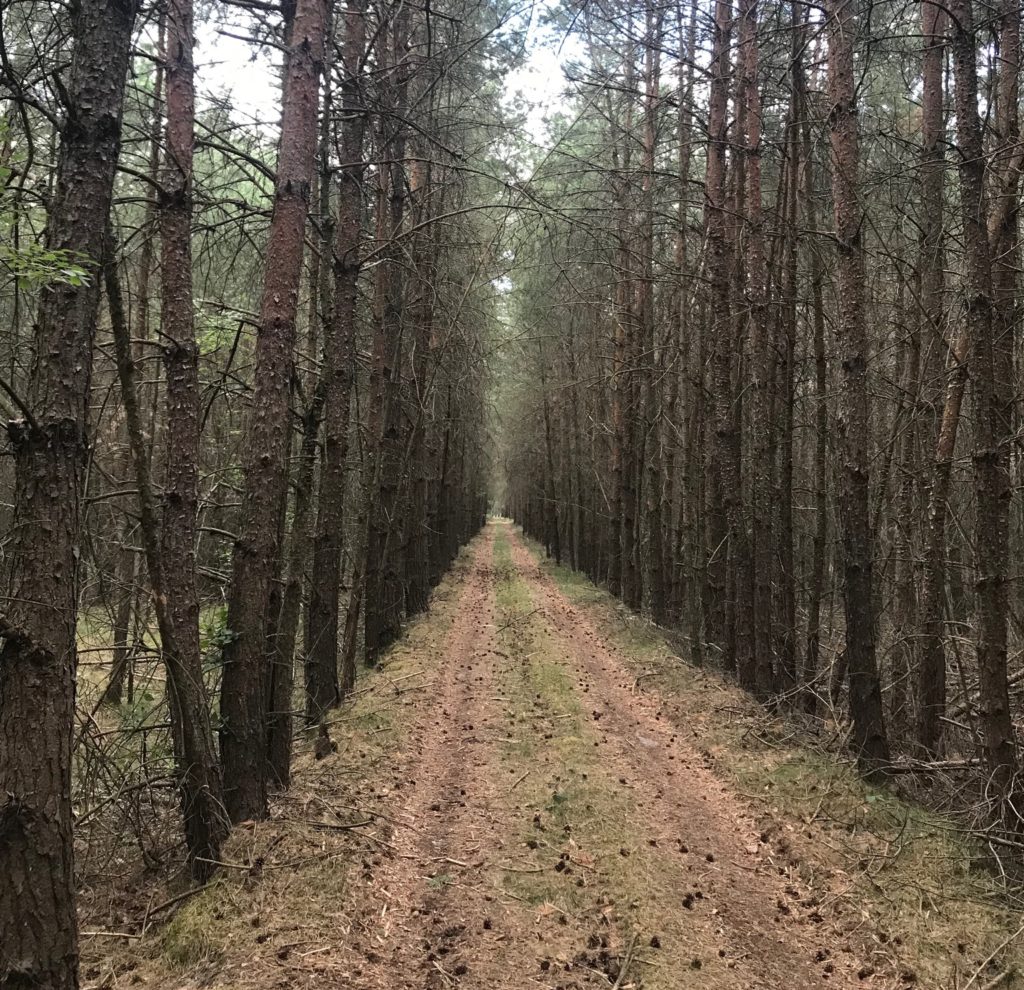
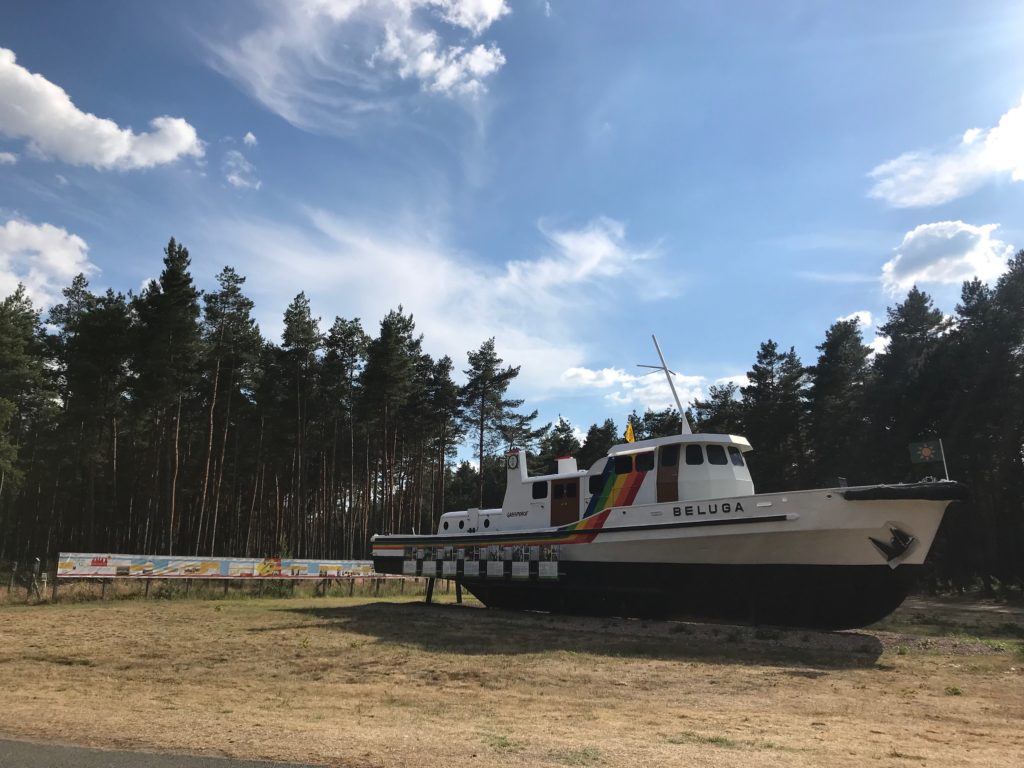
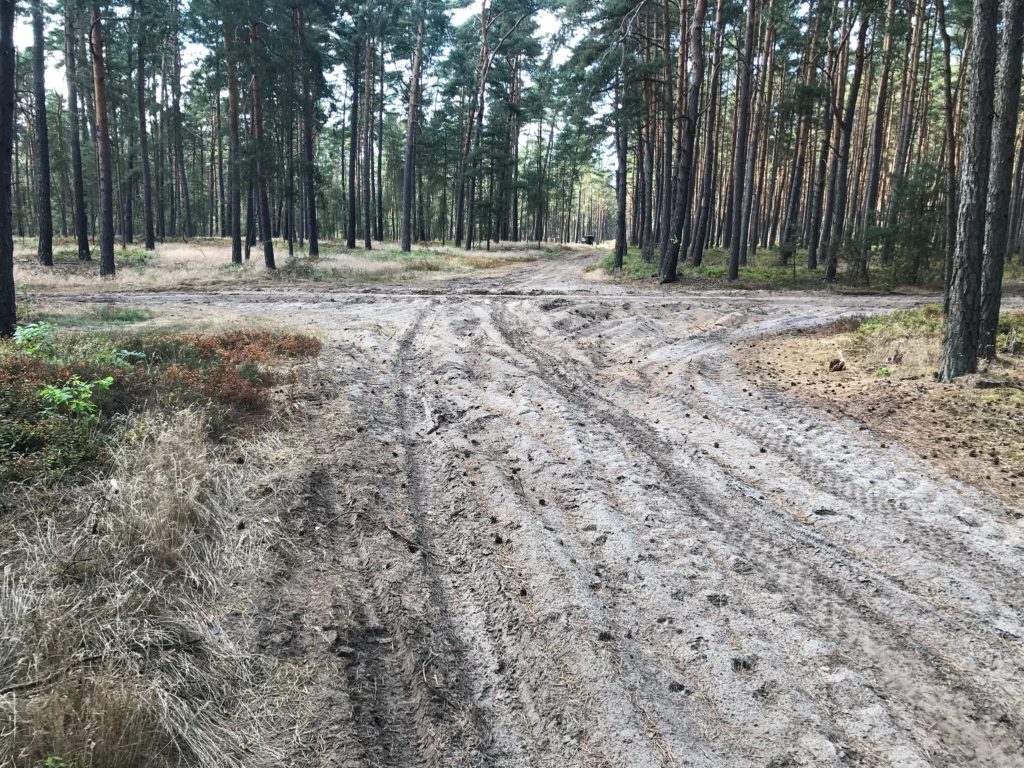
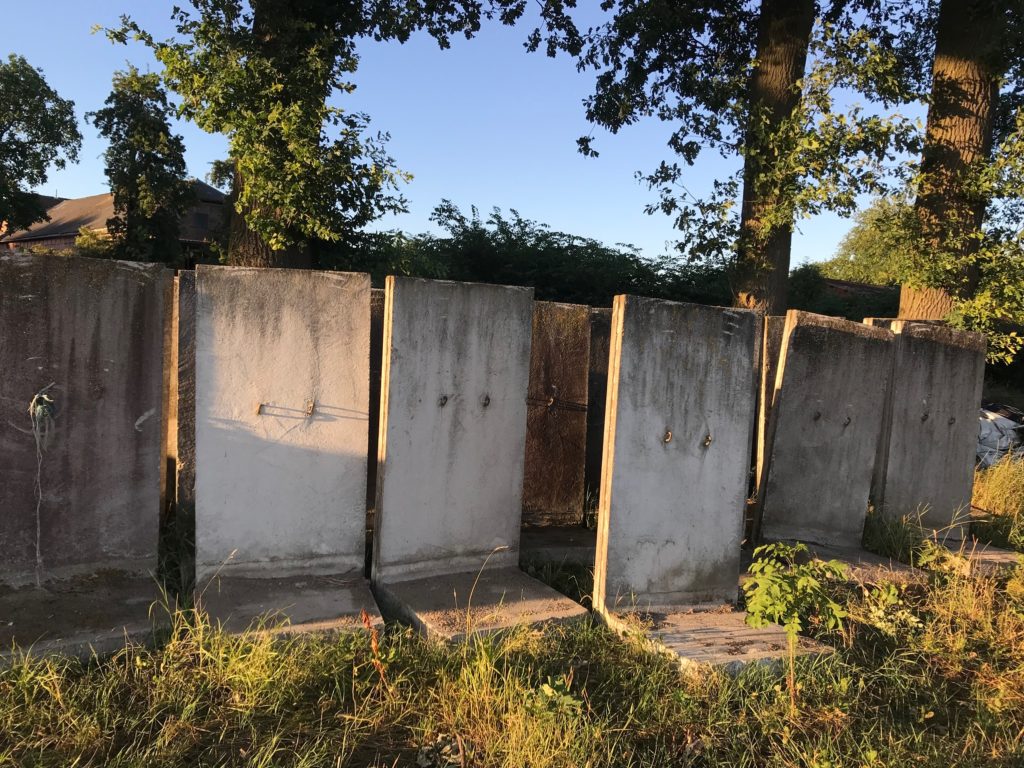


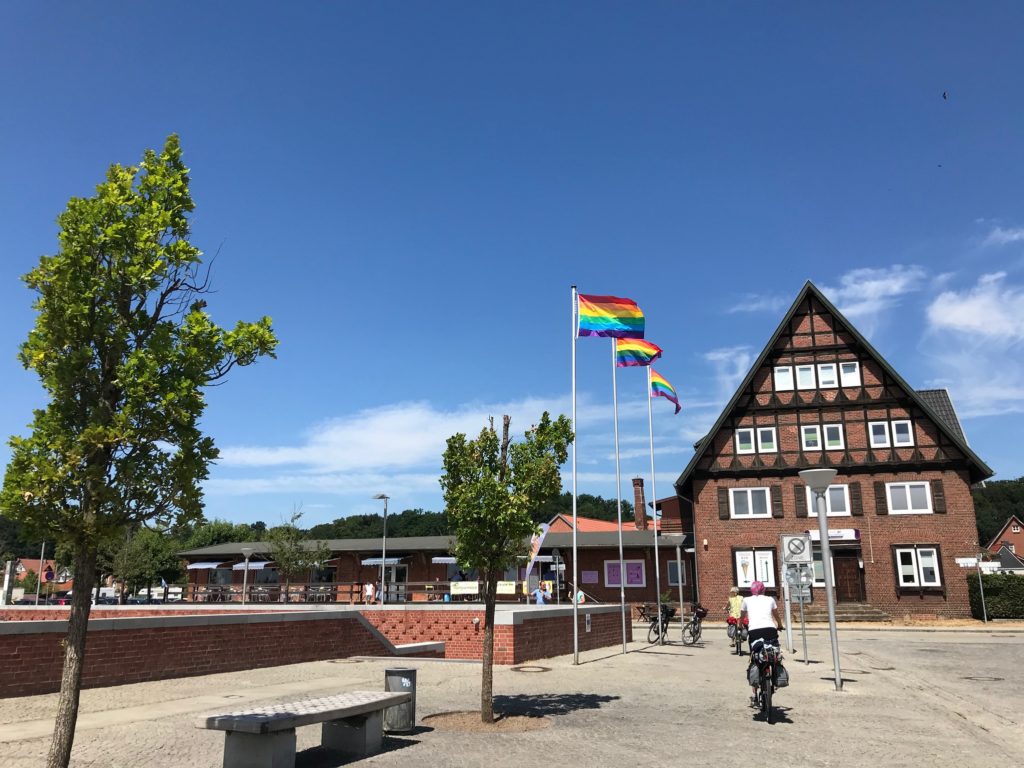
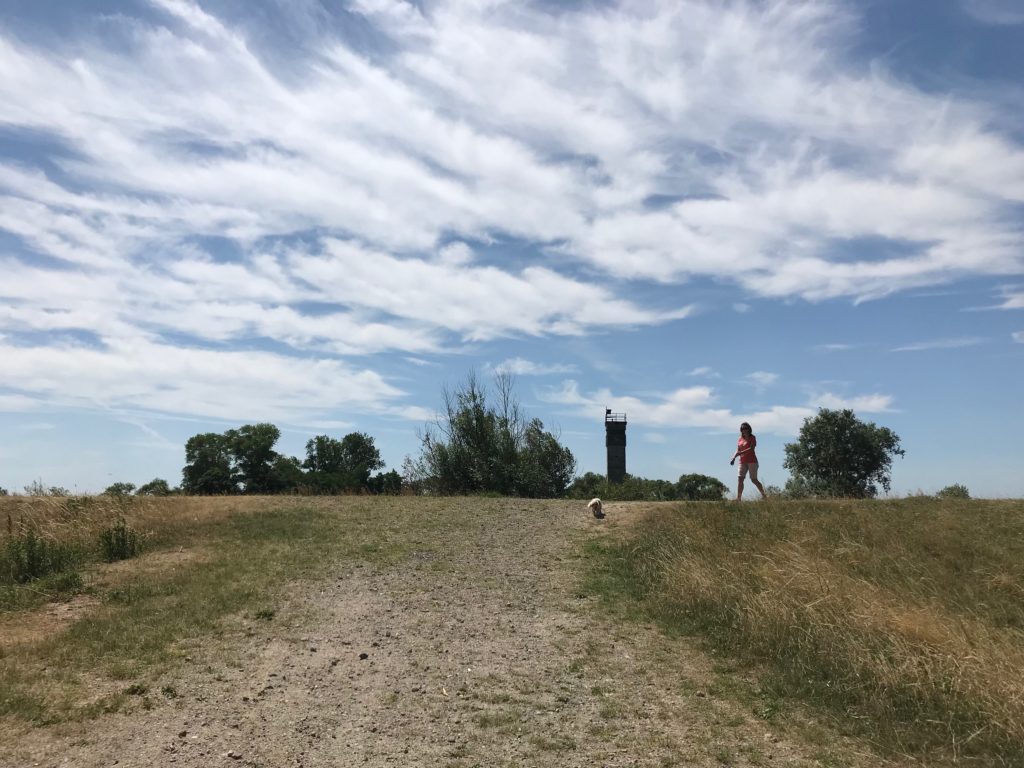
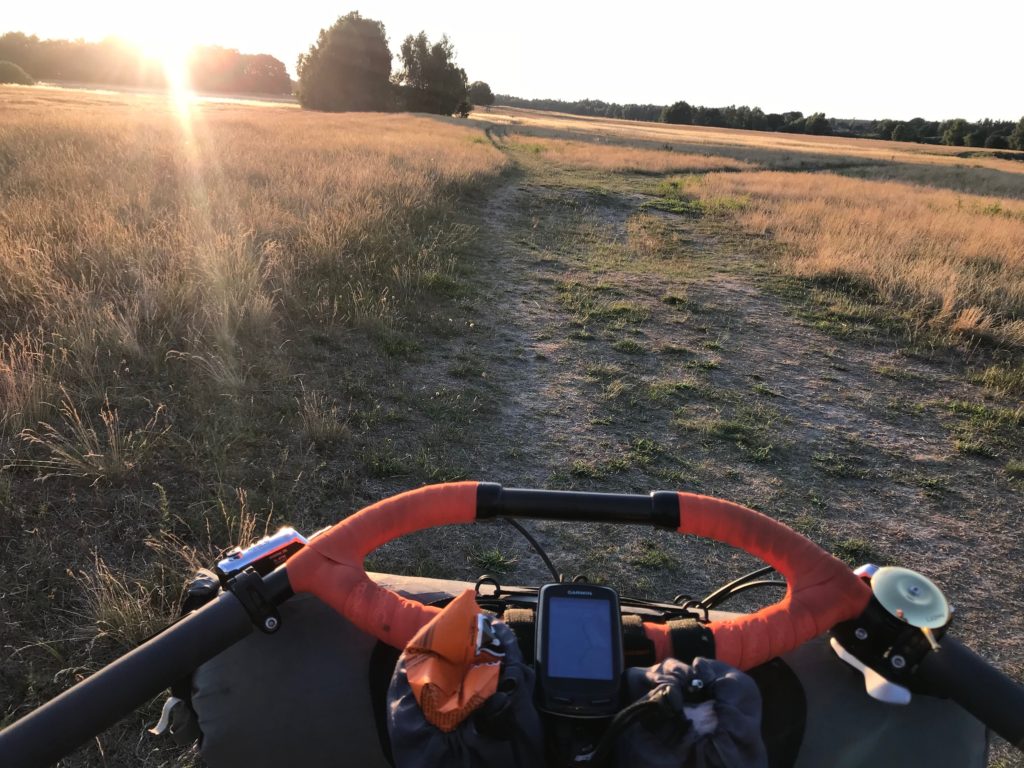


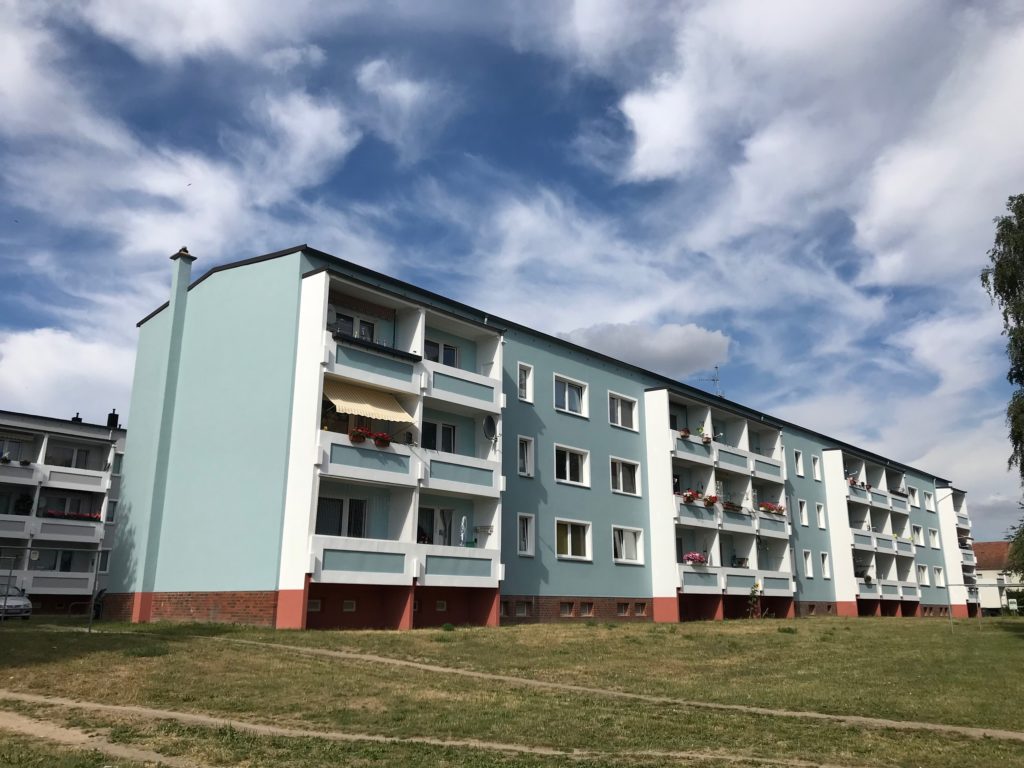


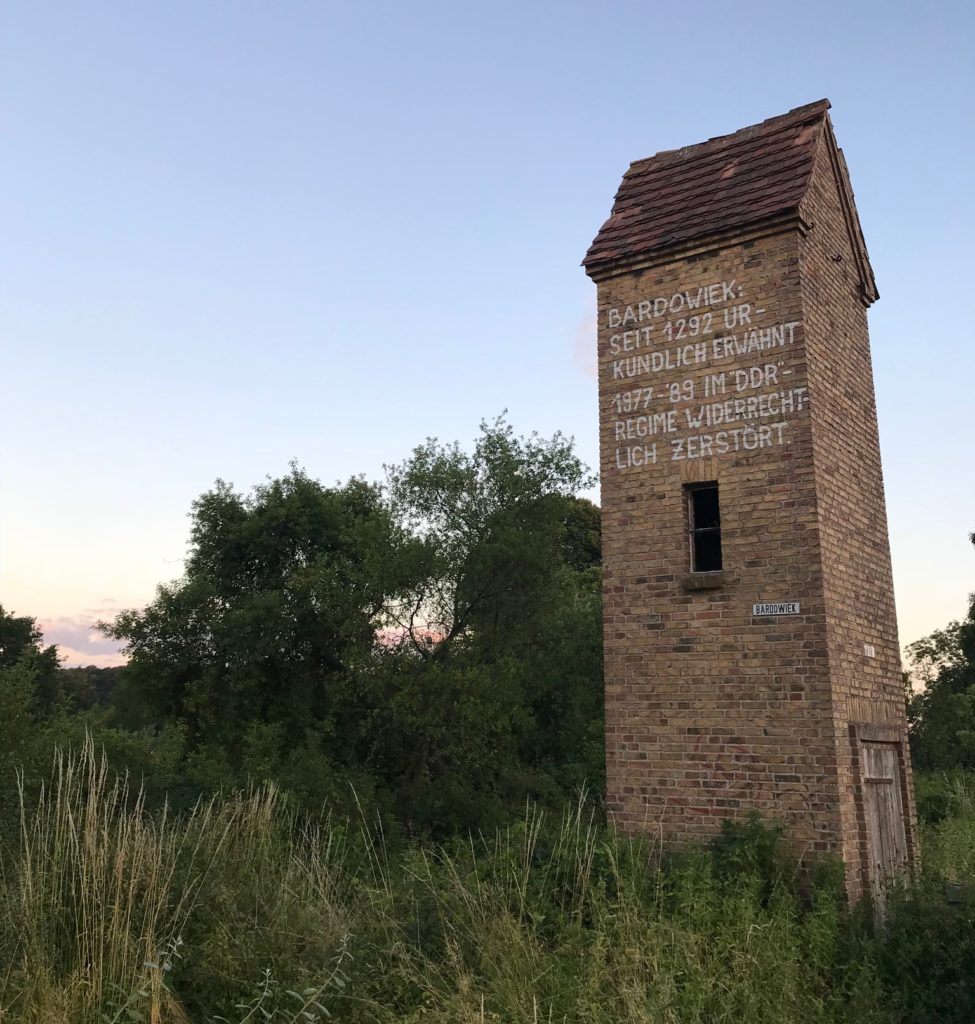
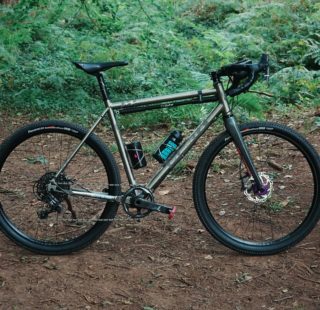
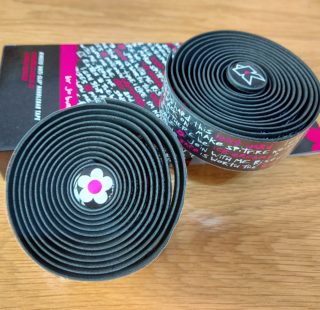




Wowser! Emma, I just read this. What an utterly brilliant piece. Funny and insightful.
Thank you for posting.